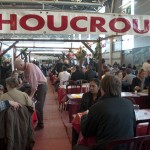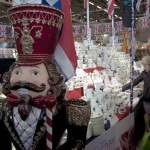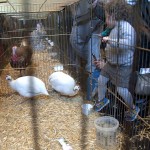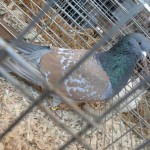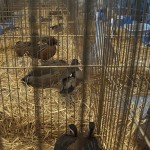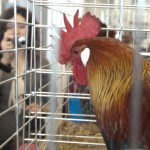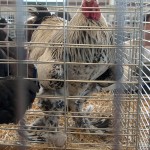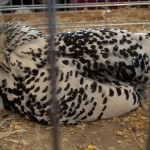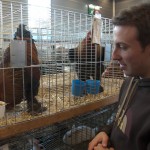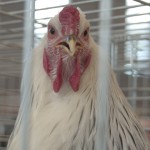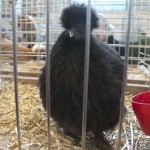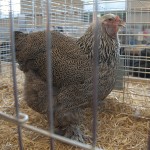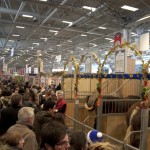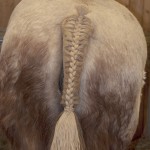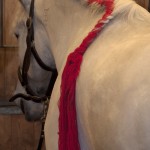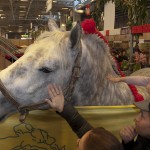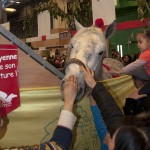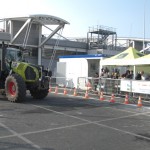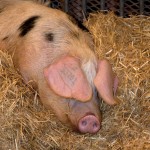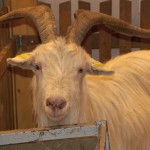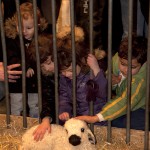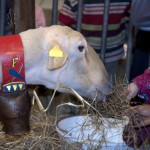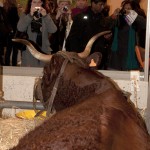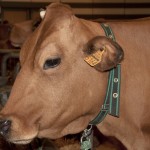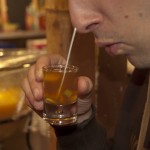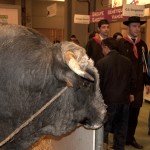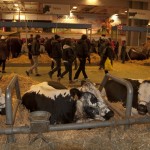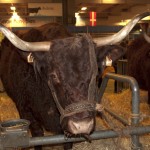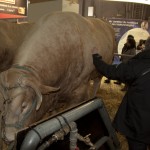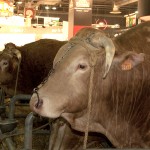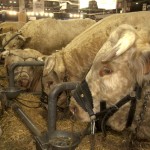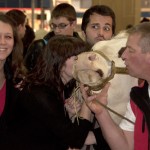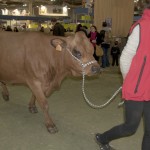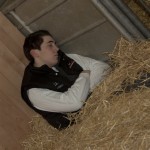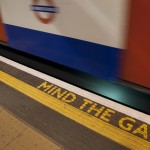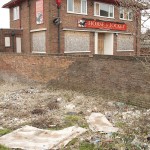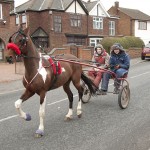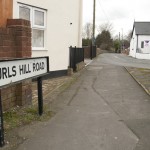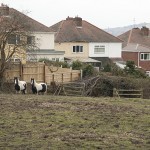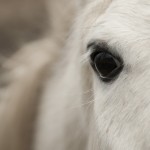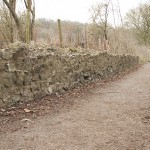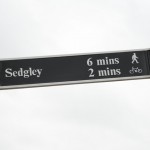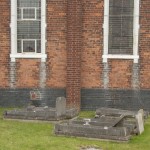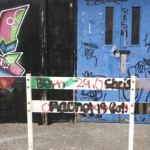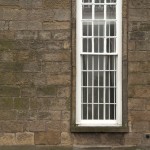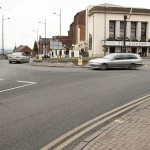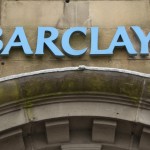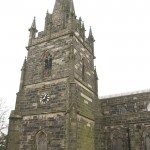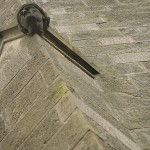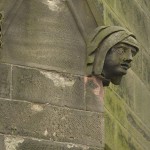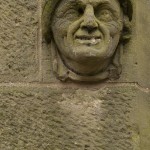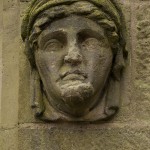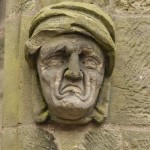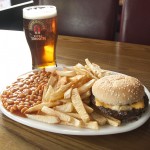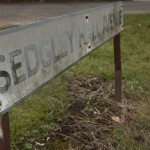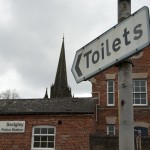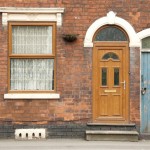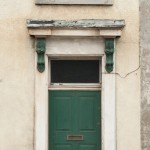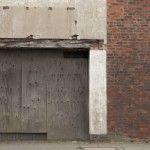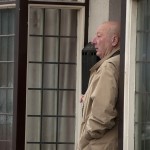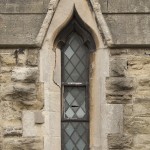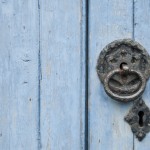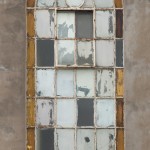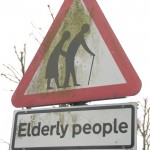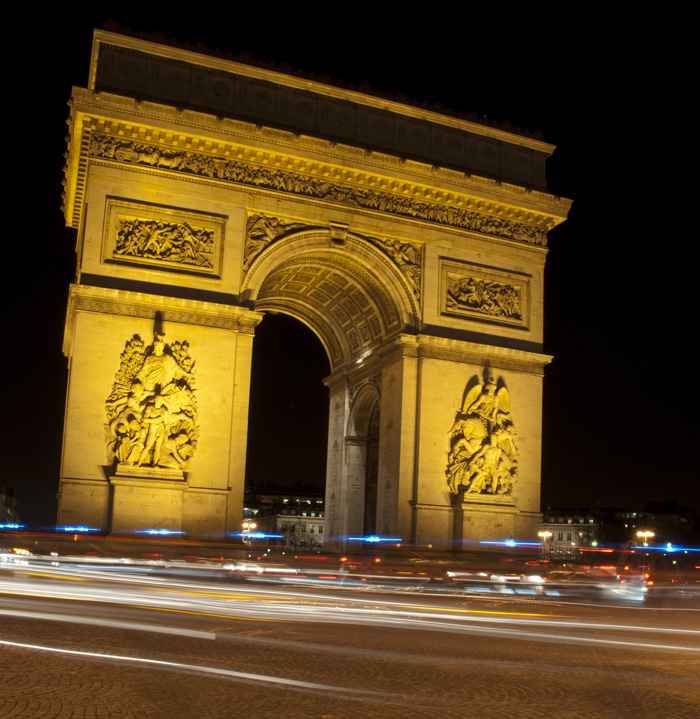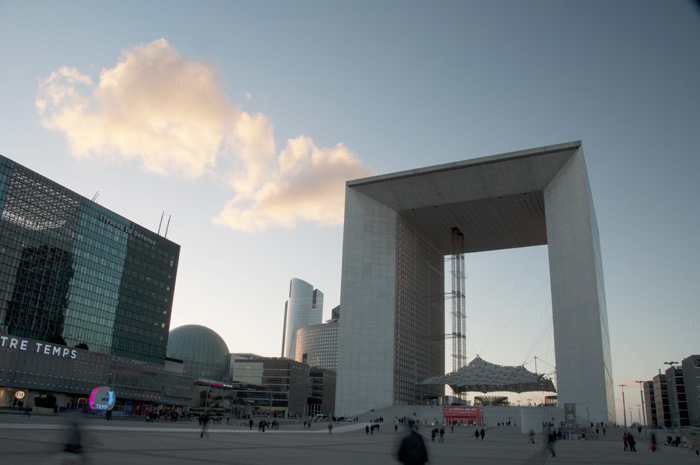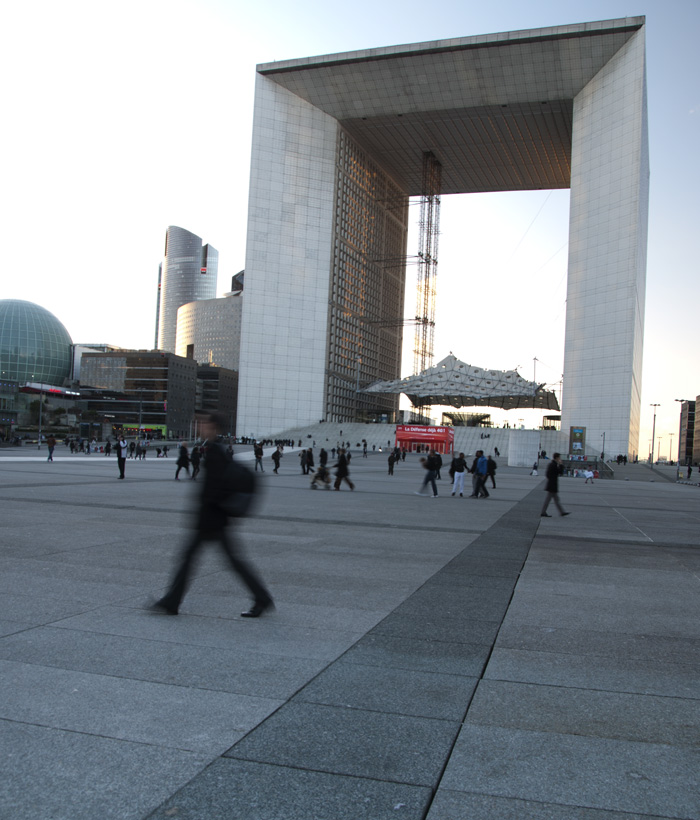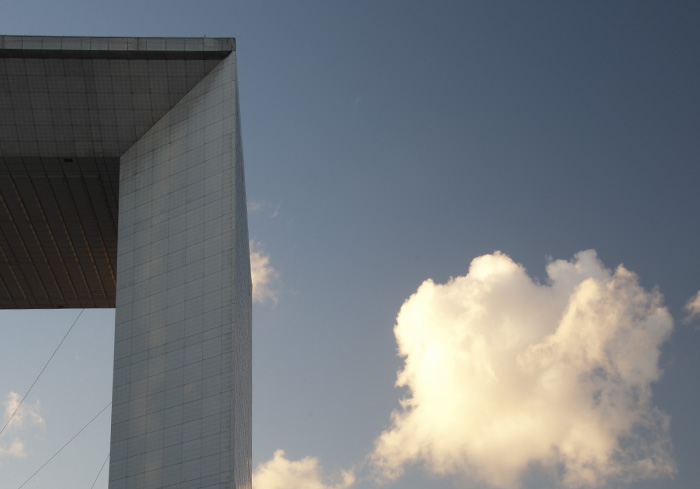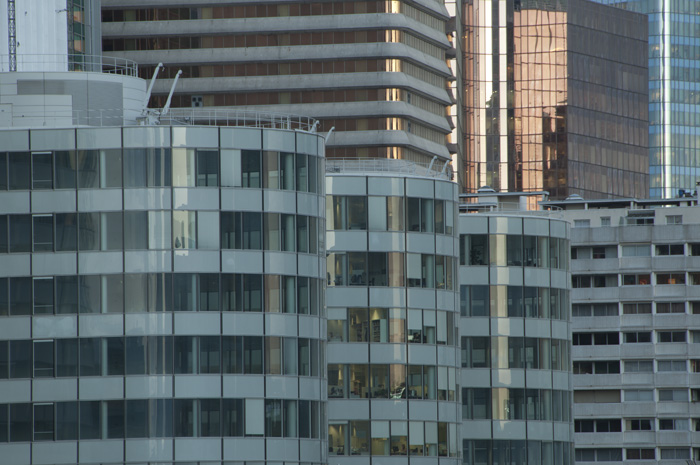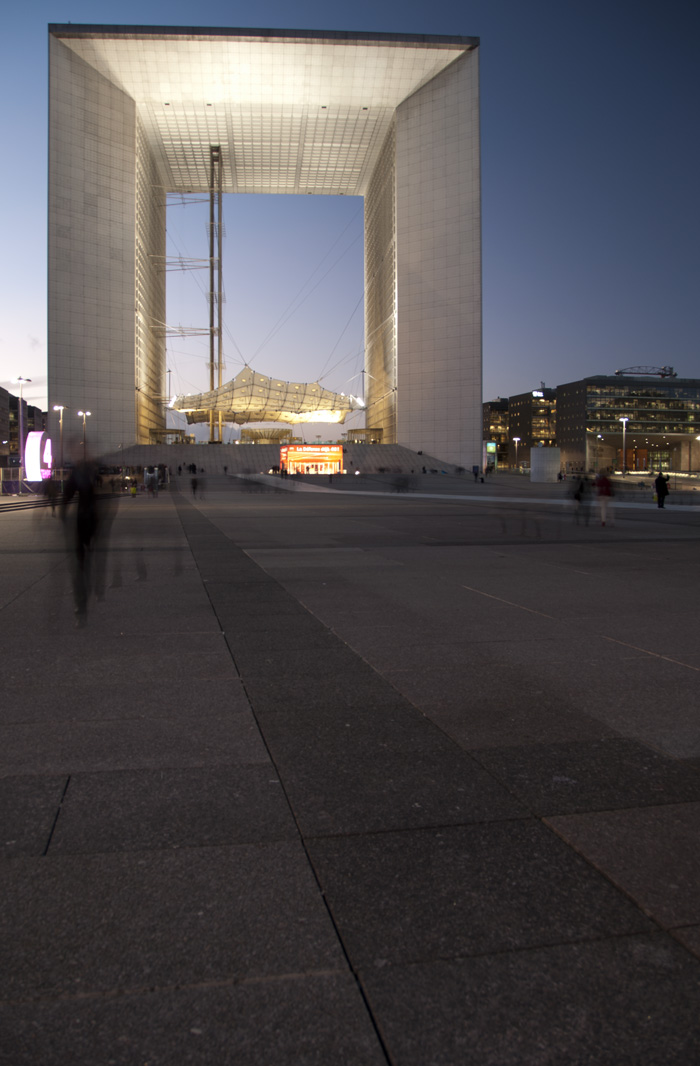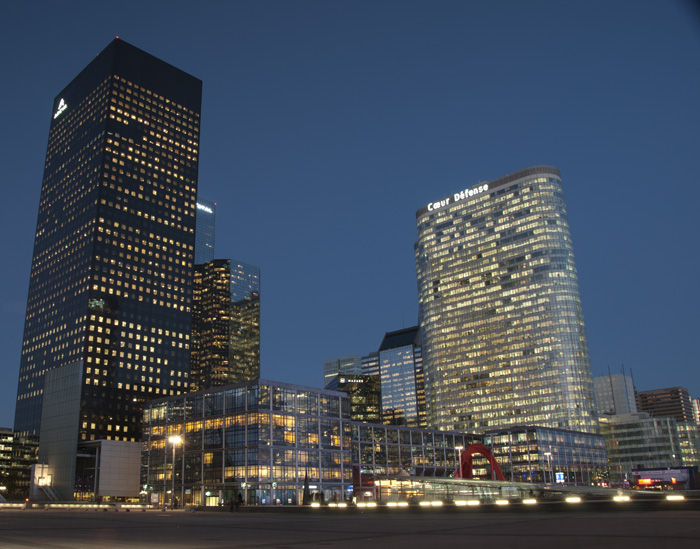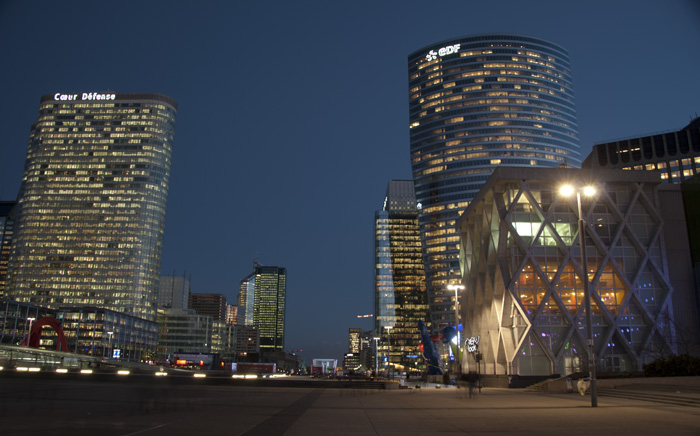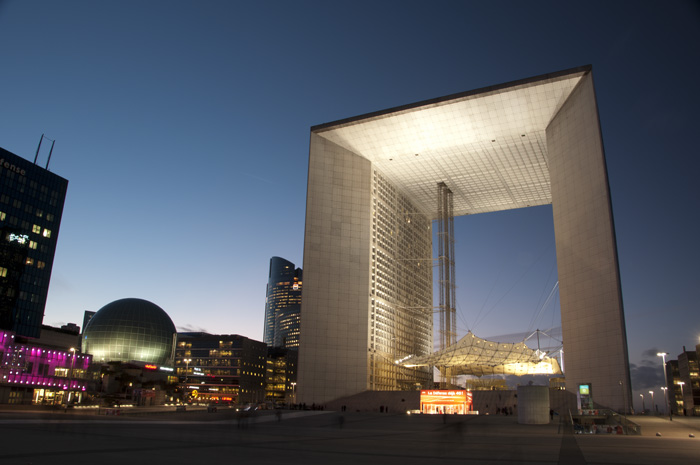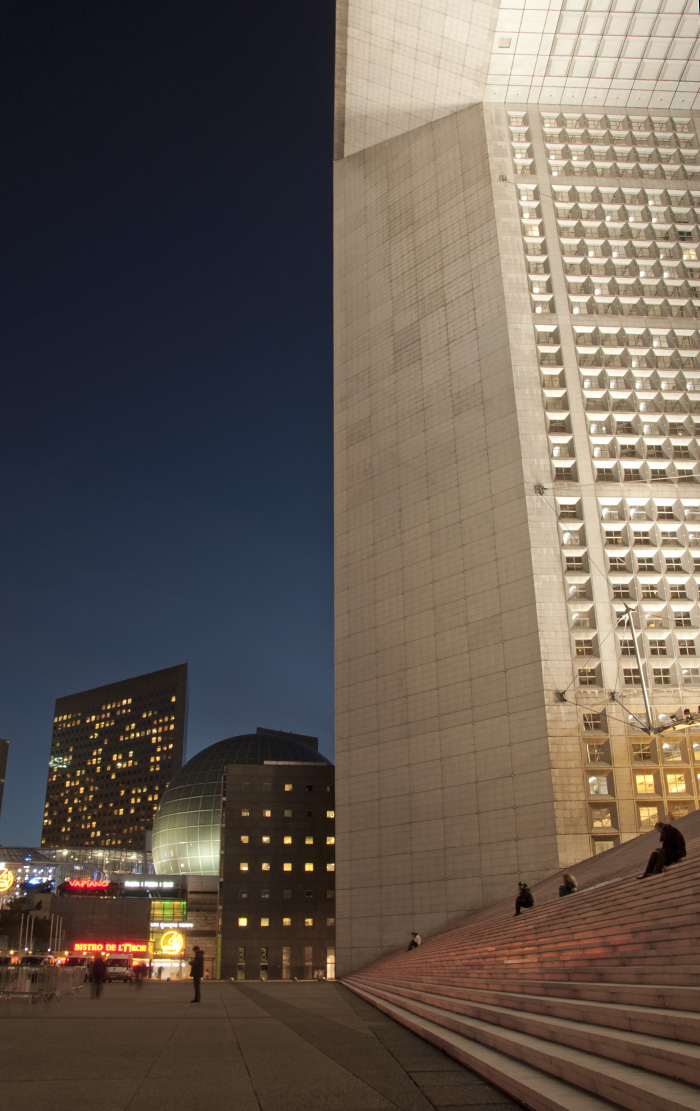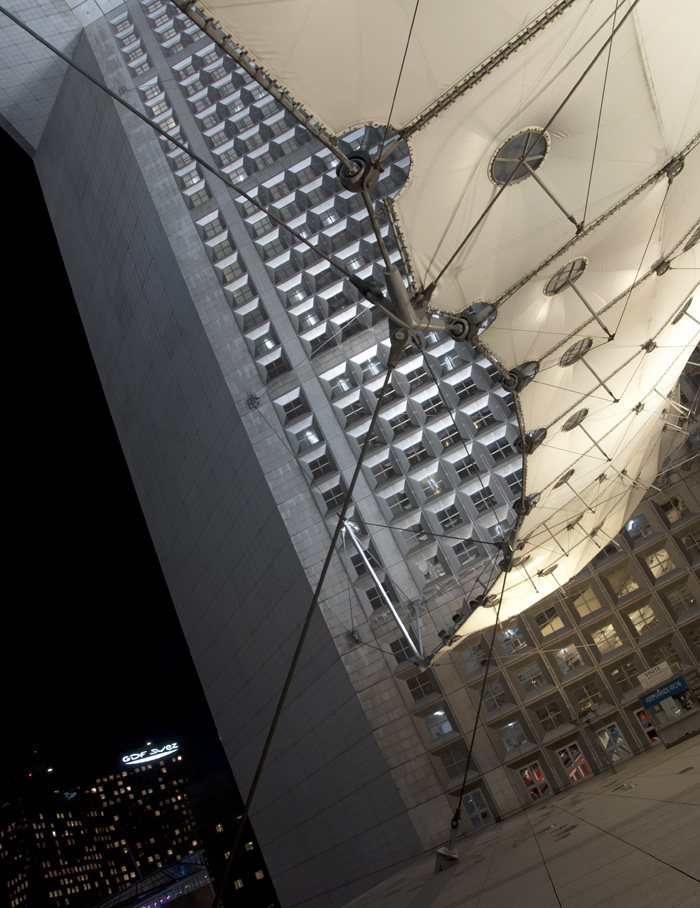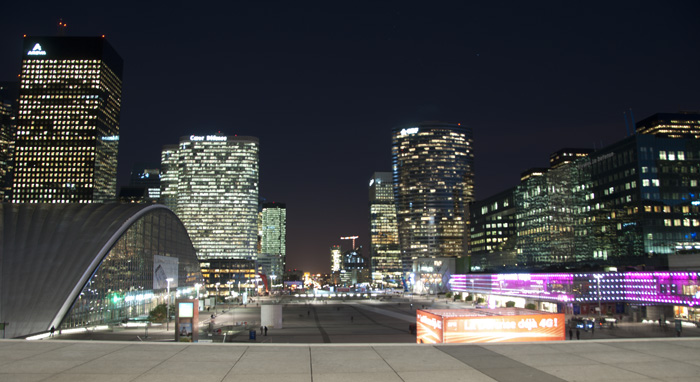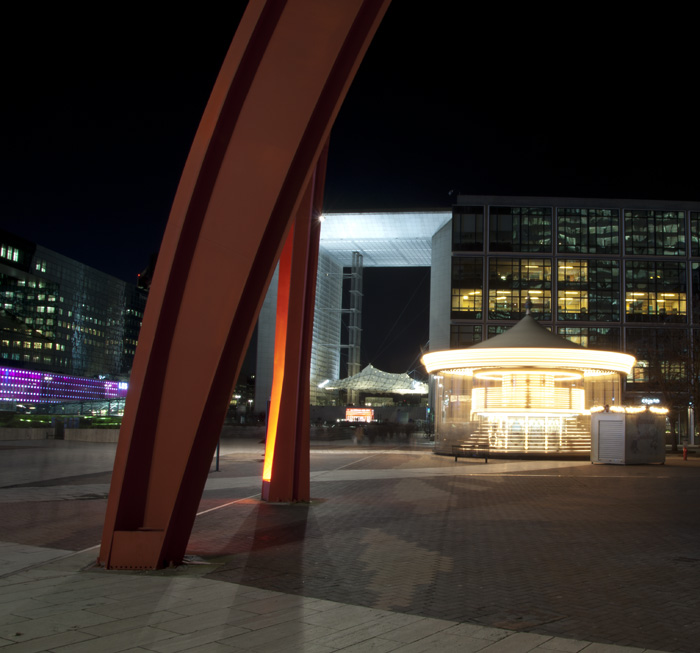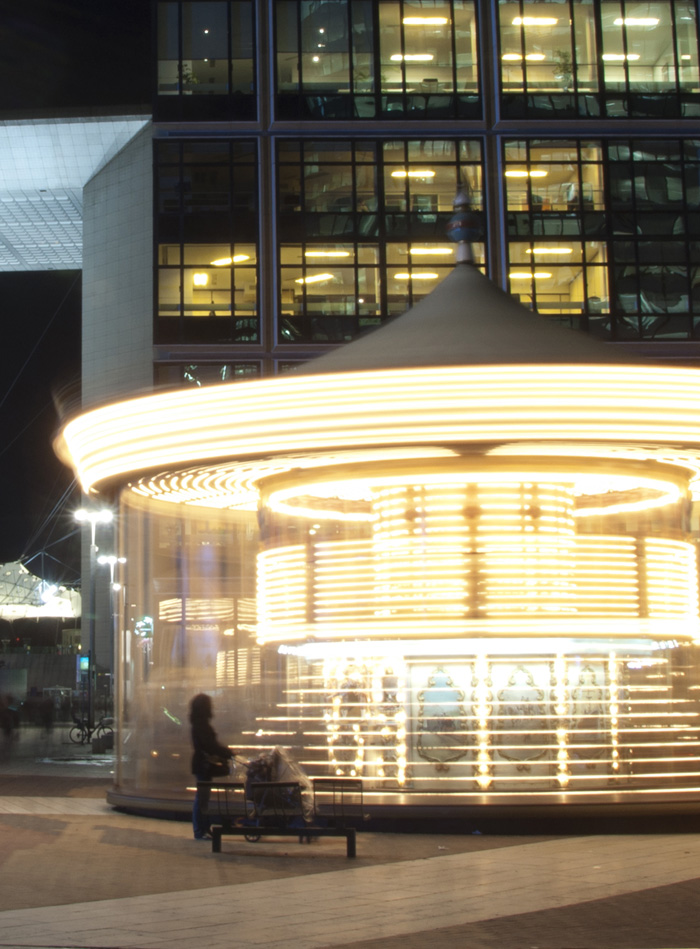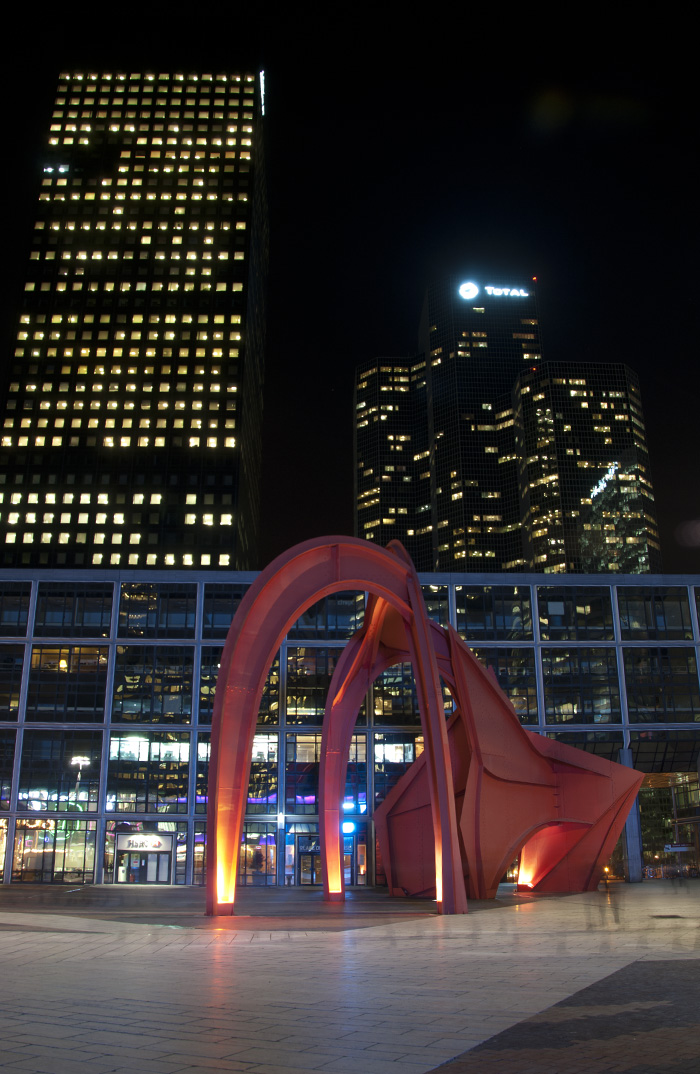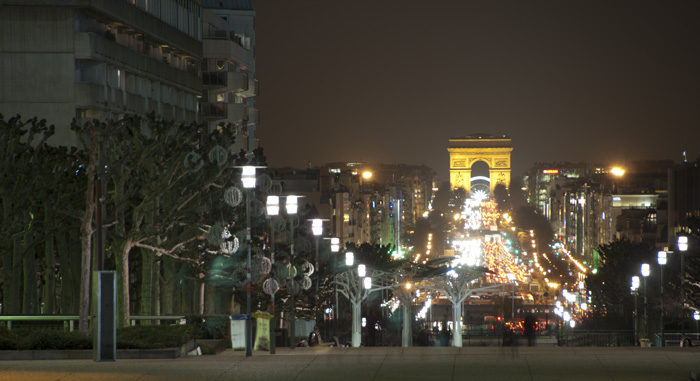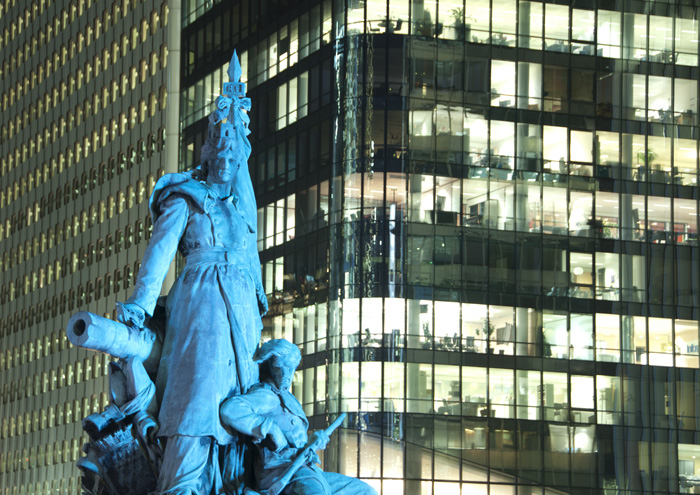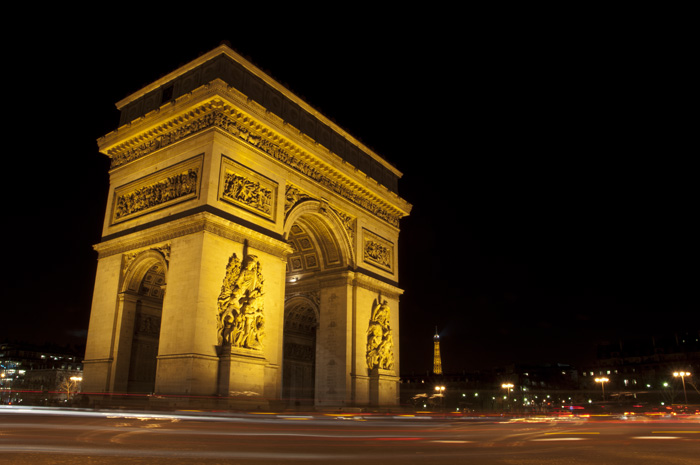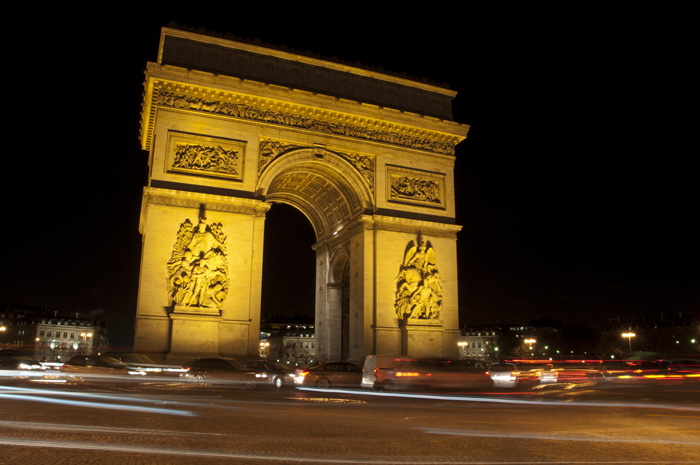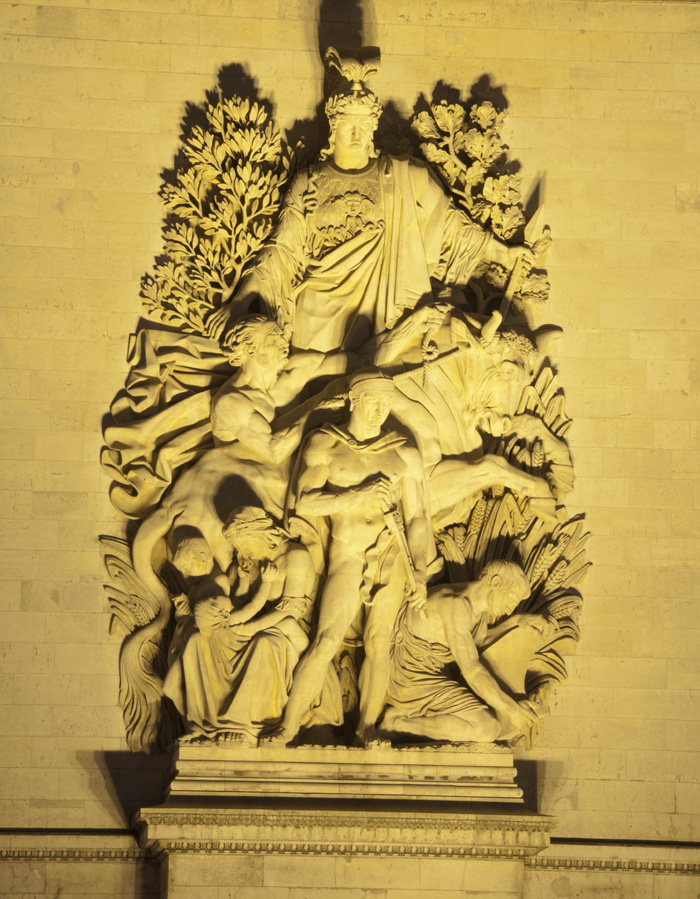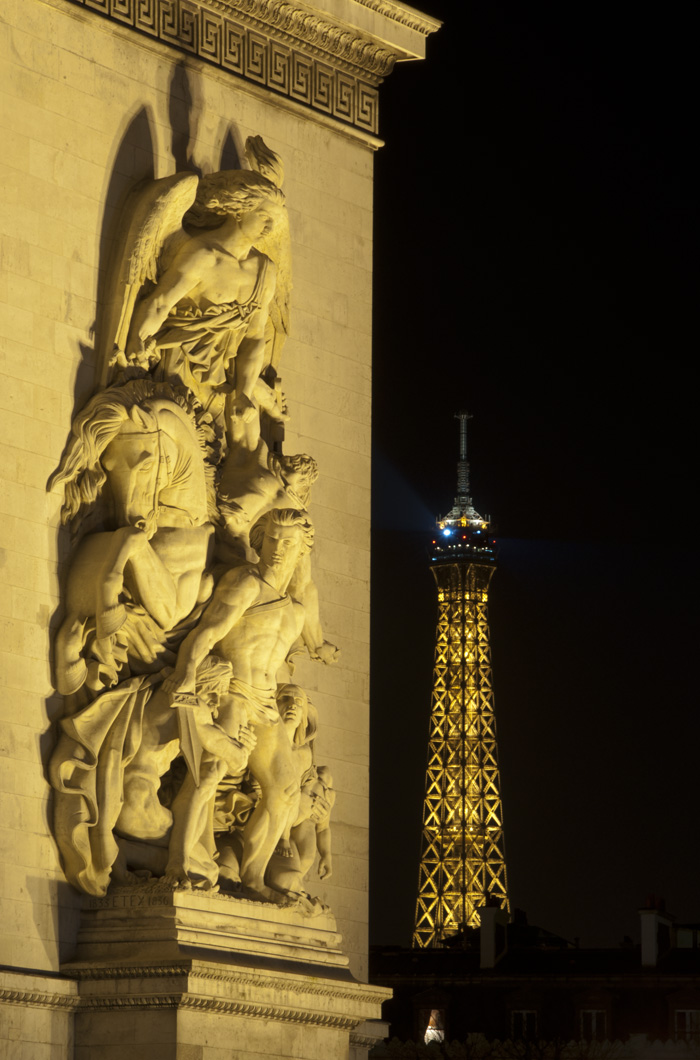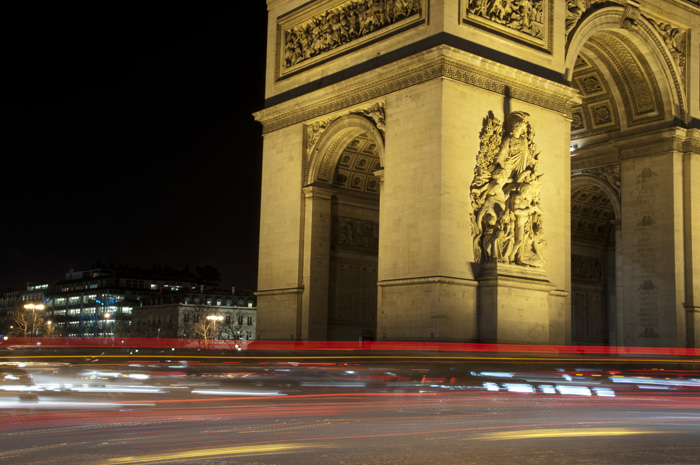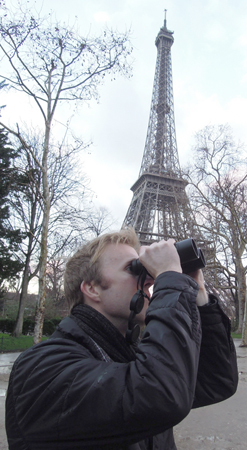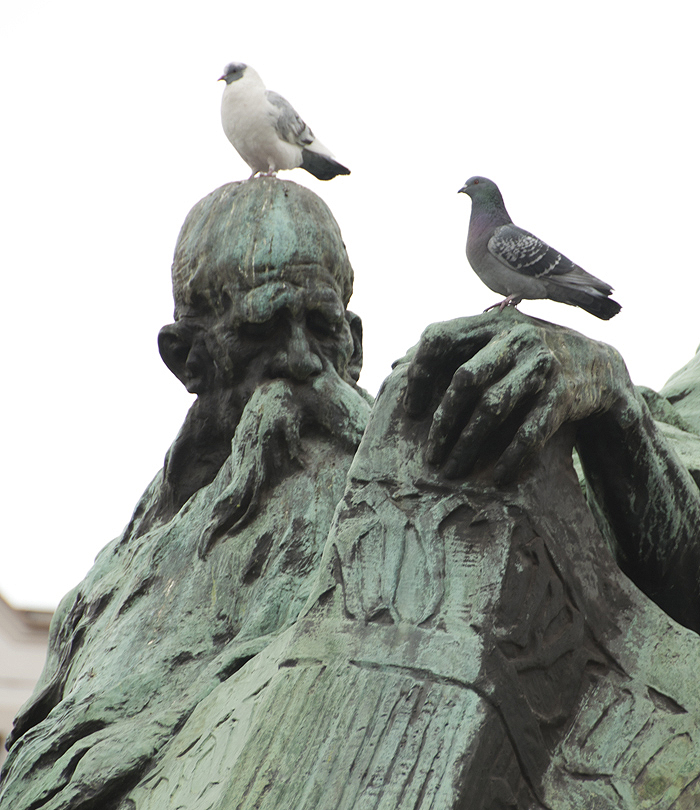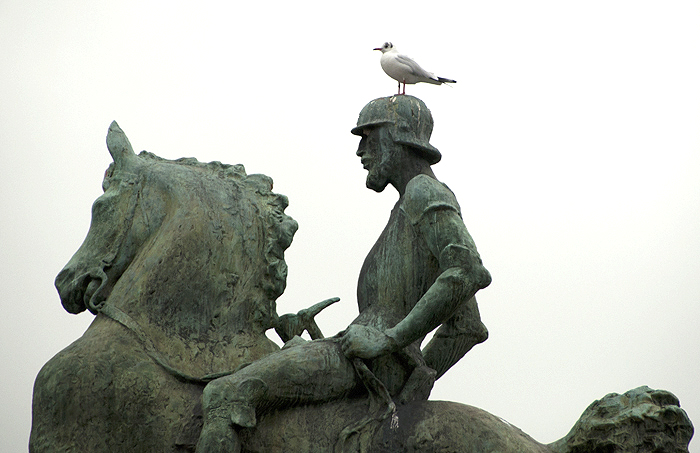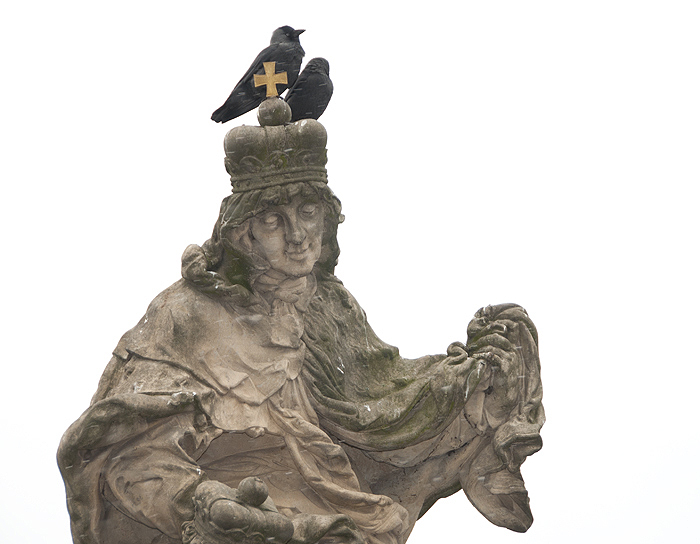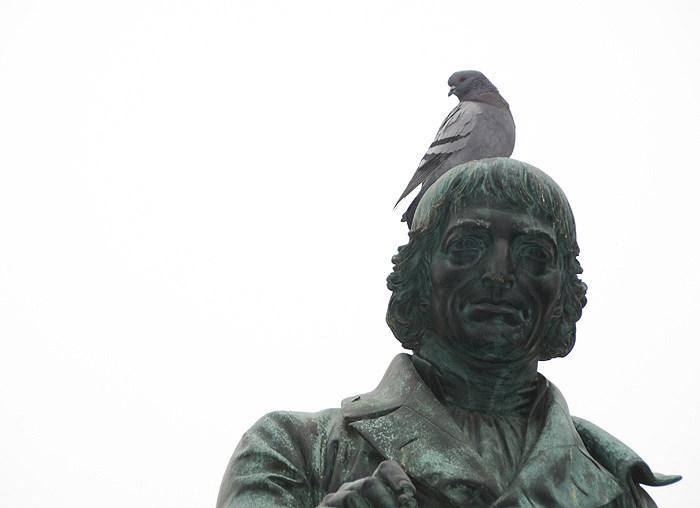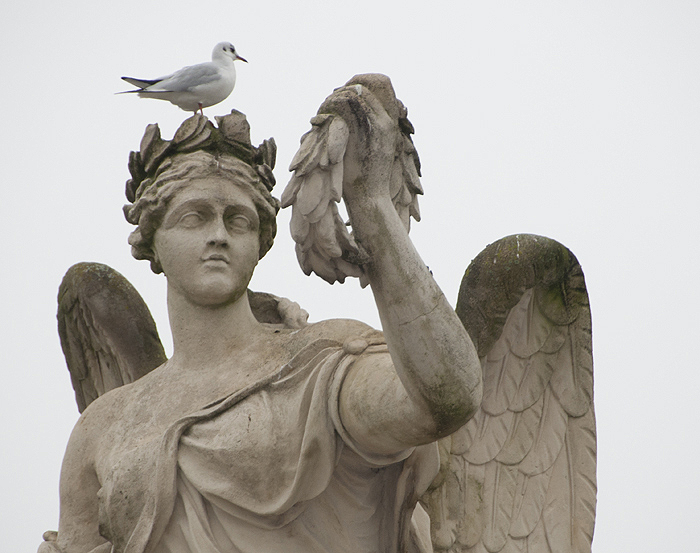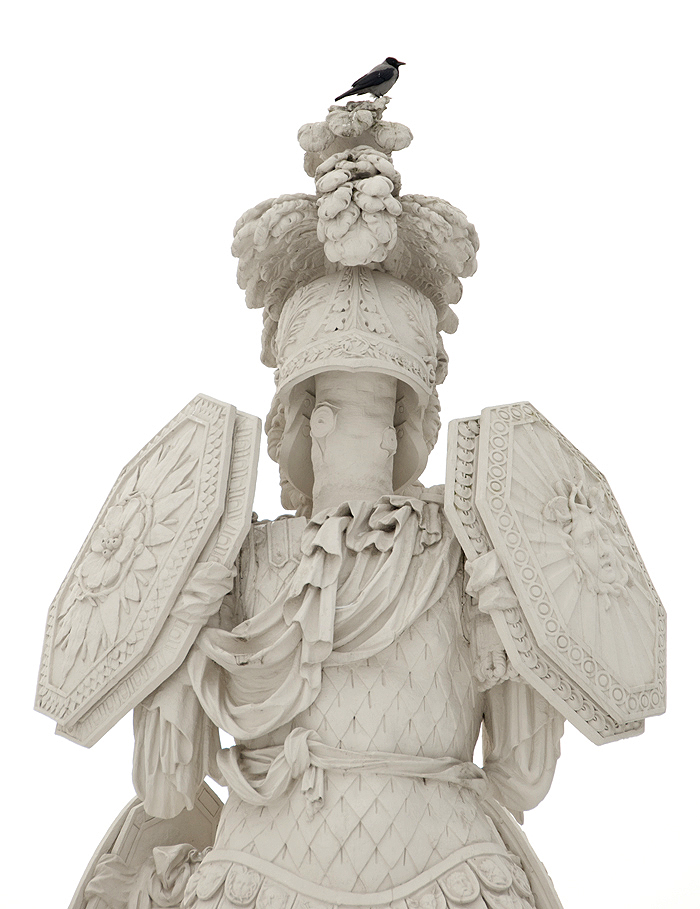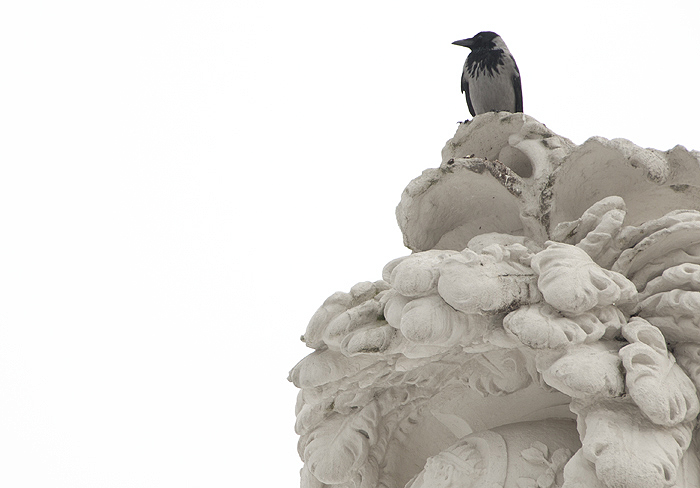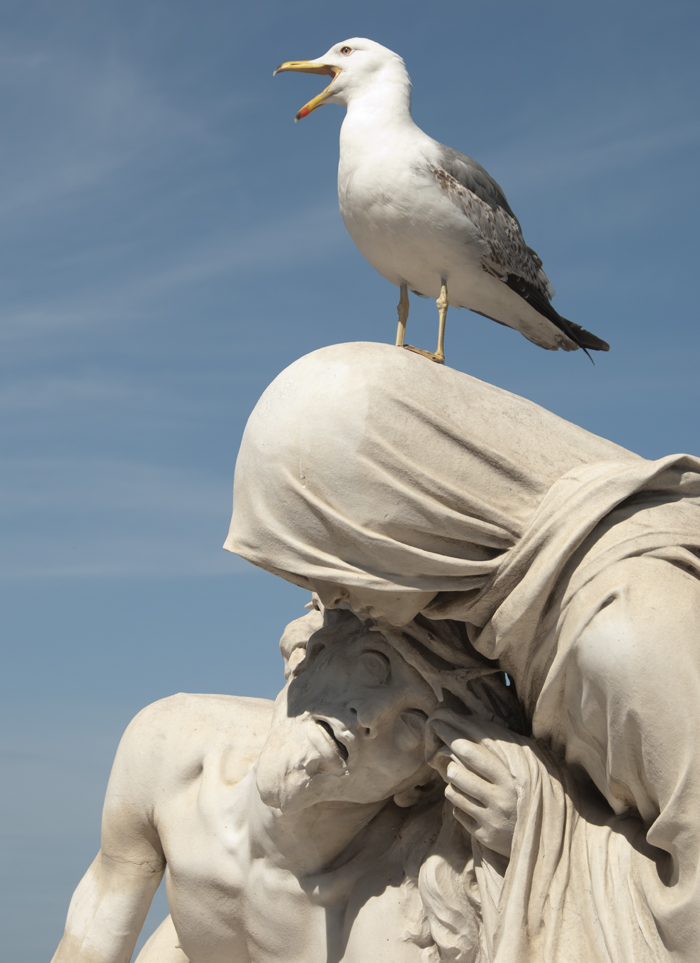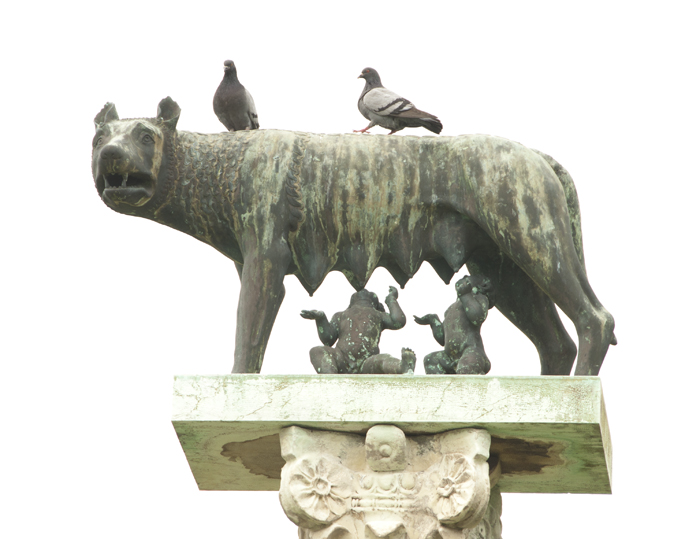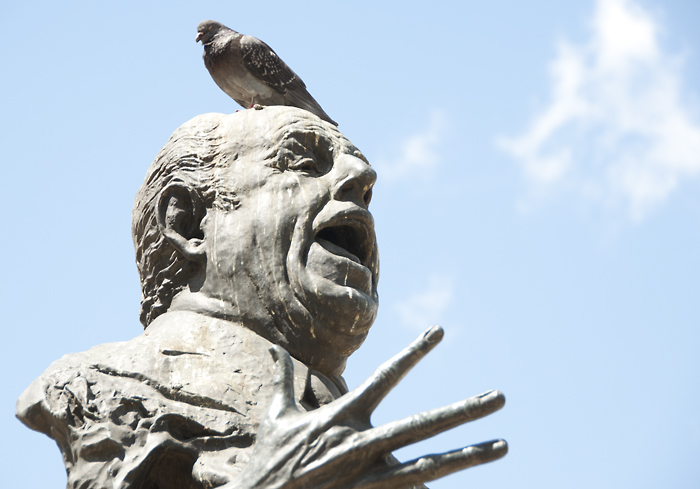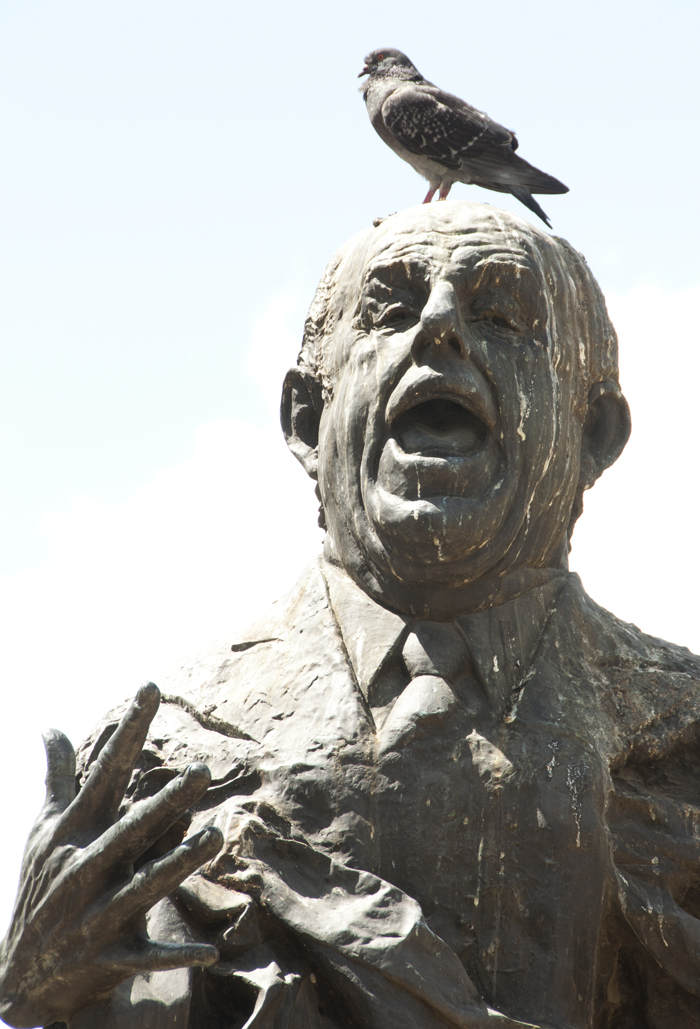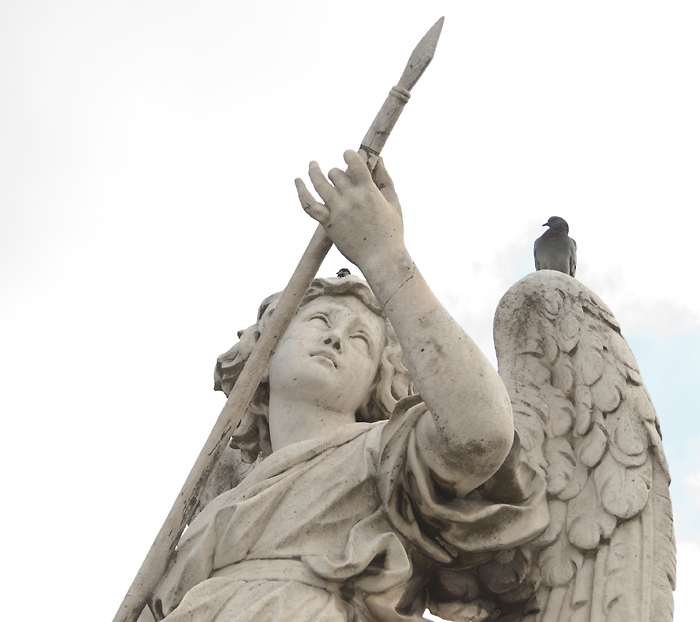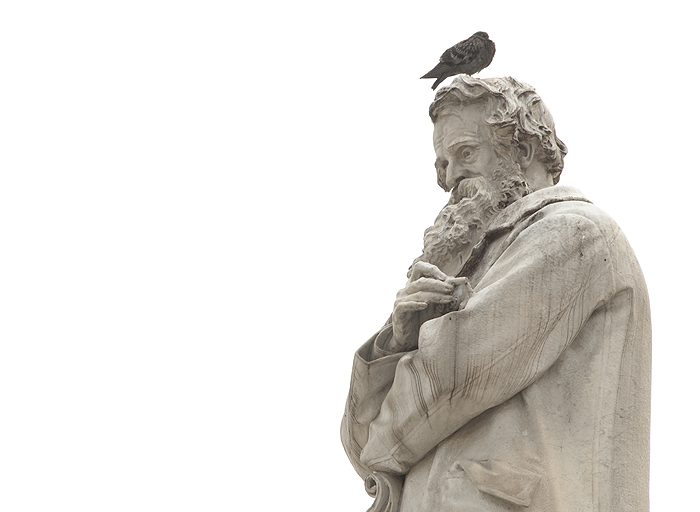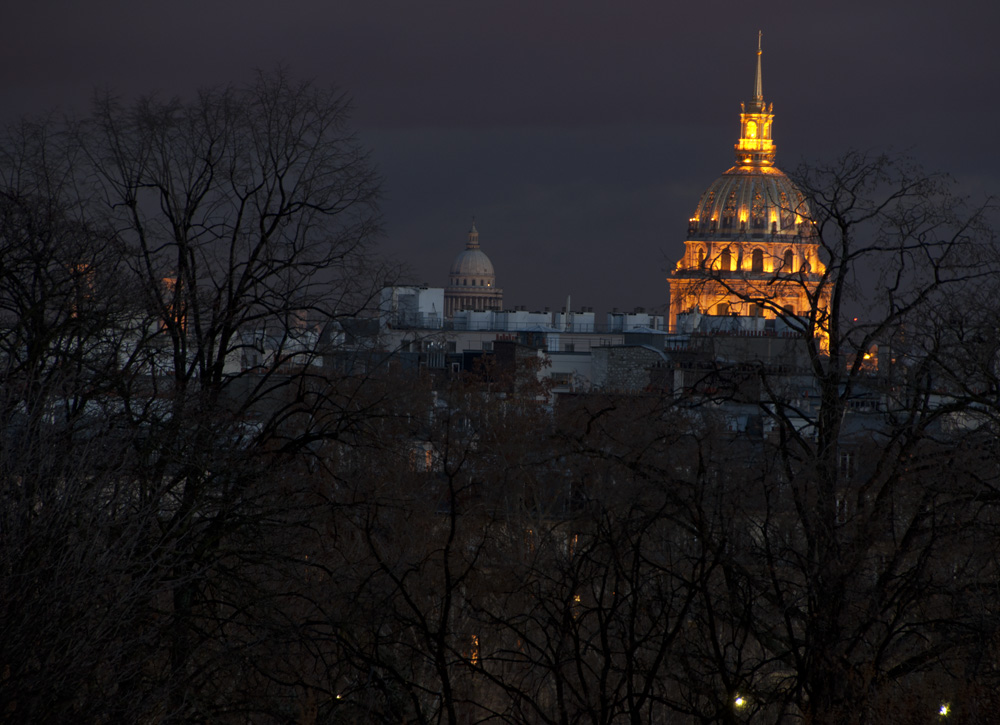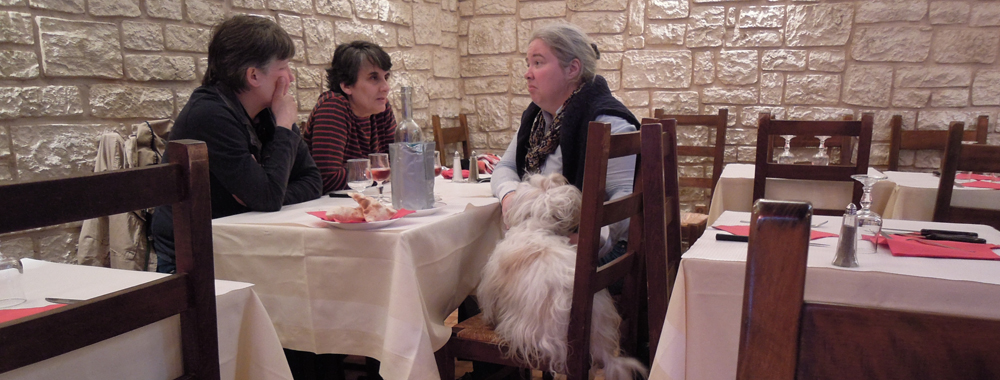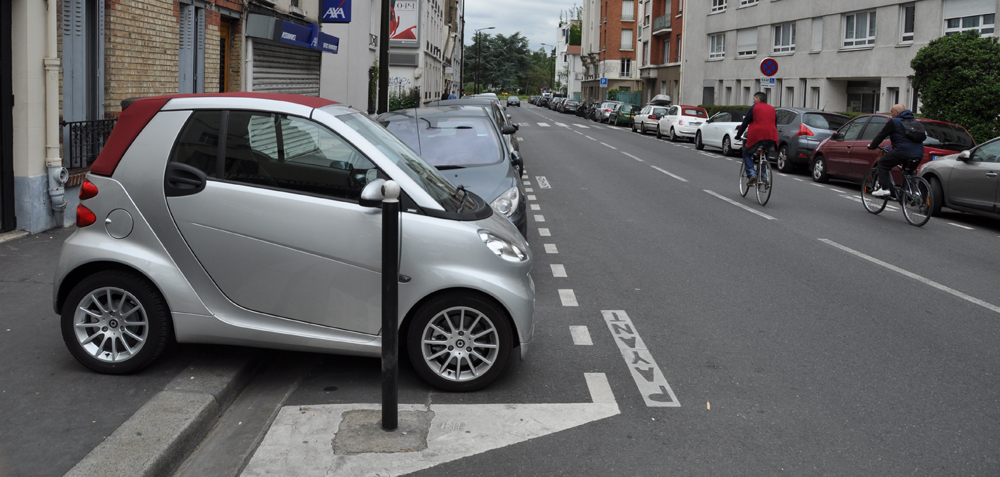Sedgley Goes to Sedgley
Paris at Night: Eiffel Tower and Bir-Hakeim Bridge
It happened again.
The sky looked damned tempting when I glanced out of our window: puffy balls of cotton back-dropped by dark storm clouds. In between those clouds was a celestial commodity that had grown rare in recent weeks: blue sky. I threw the tripod and camera in to my backpack and headed to the metro in pursuit the increasingly elusive Parisian sunset shot. Emerging from the Javel – Andre Citroen stop in the 15th arrondissement I glanced upwards—the skies still looked promising.
Tonight could be the night. I quickly took some shots of some apartments lining the Left bank of the Seine before heading across the Pont Mirabeau (“Mirabeau Bridge”) to the Right Bank.
It had rained a lot recently and the waters of the Seine were the highest—and brownest—I’ve ever seen. In fact, the riverside highway, Georges Pompidou, was closed due to flooding. I joined a handful of Parisians who assembled, by foot and wheel, to take advantage of this rare opportunity.
Unfortunately, an enormous storm cloud moved in that, while only giving periodic spits of rain, kept every other cloud in the sky from absorbing the light of the setting sun. Tonight won’t be night, as it turns out: the atmospheric unicorn eludes me yet again. The dry lining to this storm cloud, however, were reflections shots afforded by several puddles underneath Pont Bir-Hakeim. Both pools swelled and receded with each passing barge.
A passing French photographer, Pierre-yves Calvat, captured me taking a photo with the Eiffel Tower in the background. It is now featured on my about page: be sure to check out his website.
It was a nice, mostly dry evening photographing two bridges, some brown water, and a large metal spire.
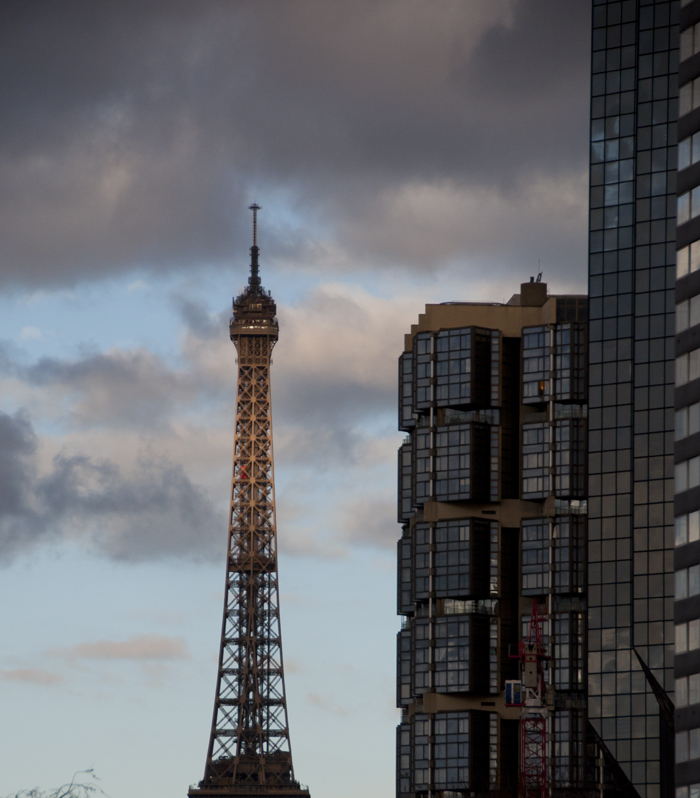
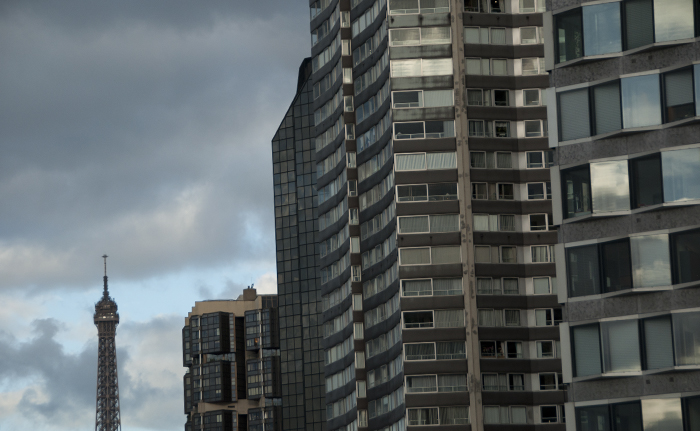
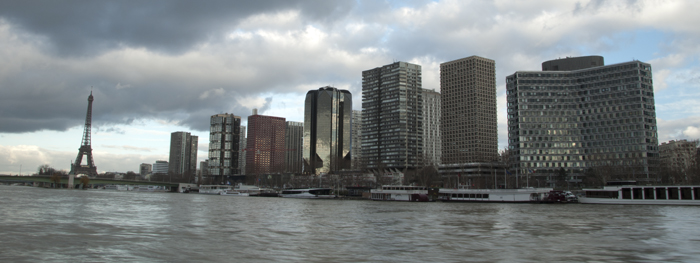
Apartments and office buildings along the Left Bank.
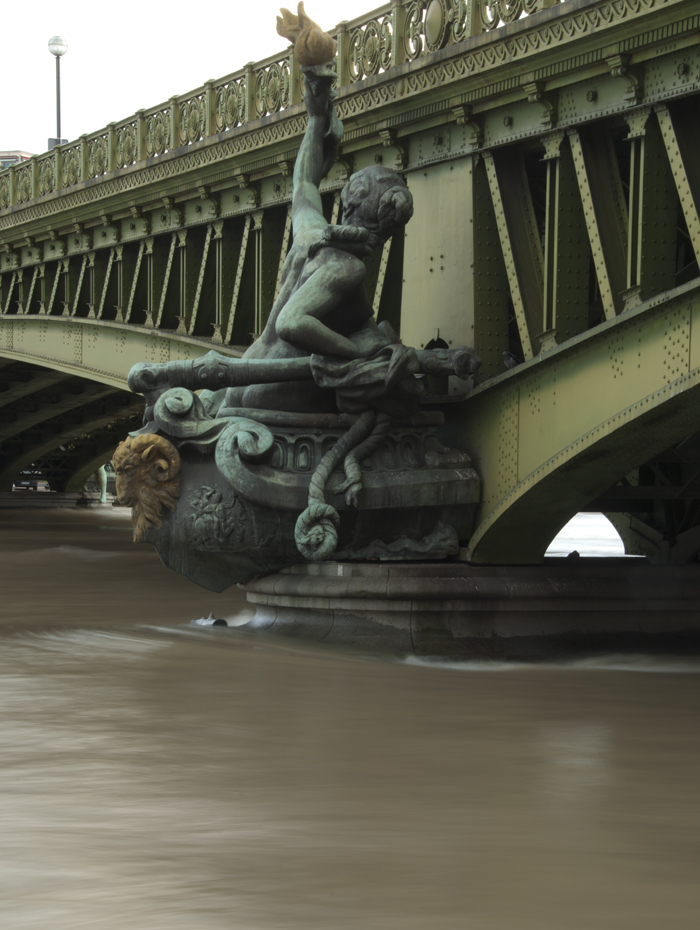
High water rushes past Pont Mirabeau, completed in 1897. This sculpture—one of four gracing this bridge—depicts “navigation on inland waters”. She’s got her work cut out for her … but she’s facing the wrong direction.
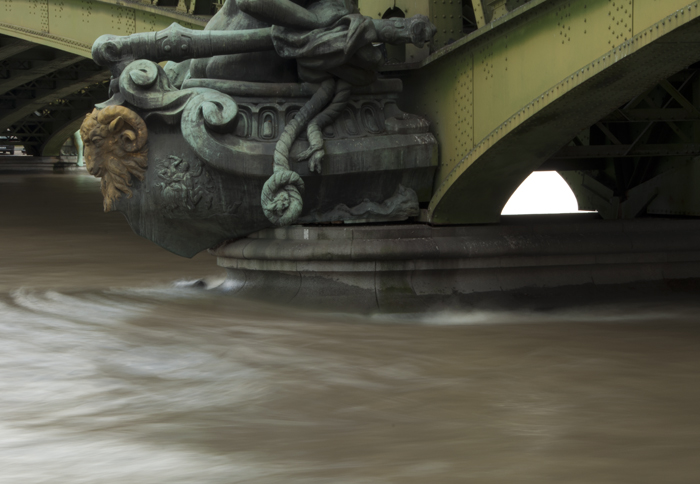
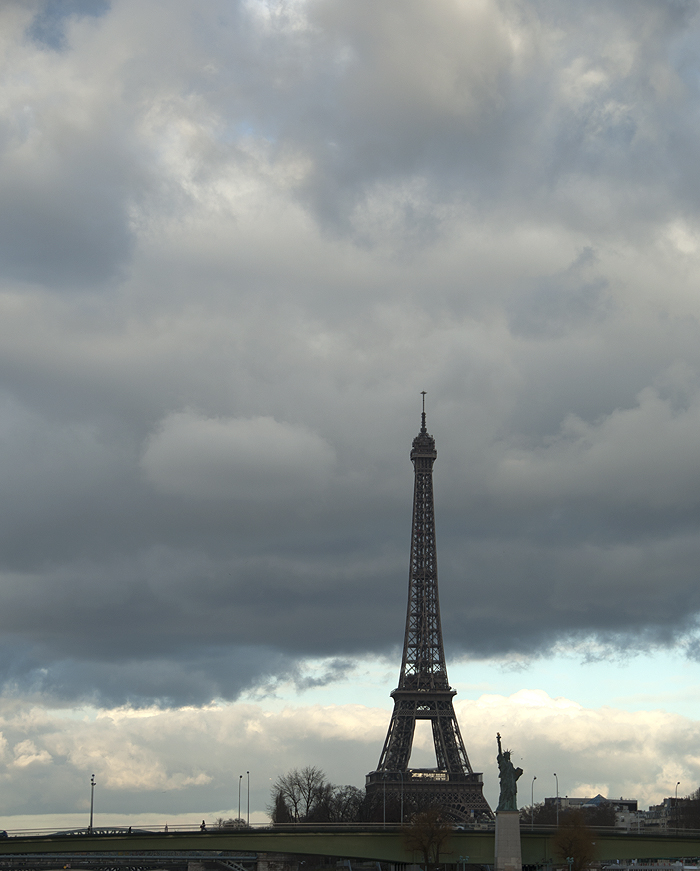
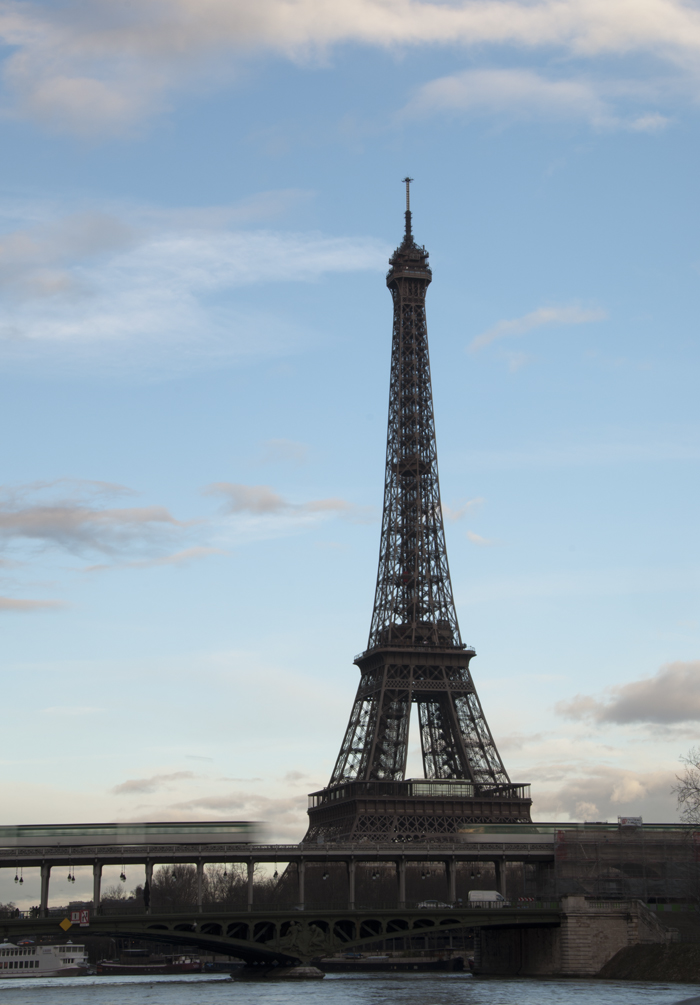
Two trains approach one another on the Line 6 metro while crossing Pont Bir-Hakeim.
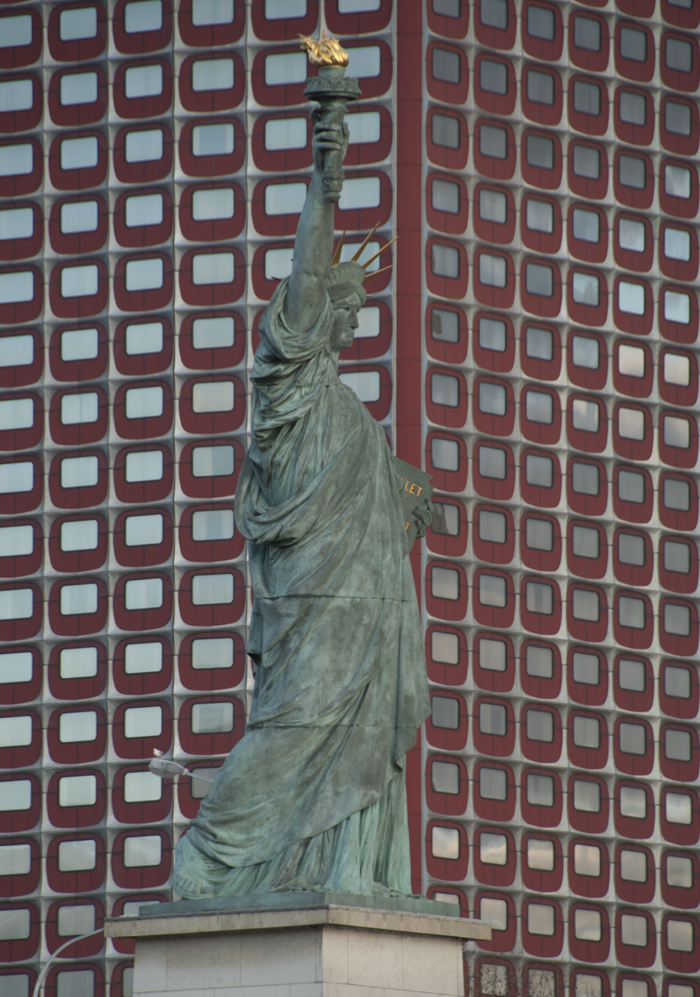
The one fourth sized replica of the Statue of Liberty, built three years after its larger cousin in 1889
as a gift from the Parisian-American community to the French govermment.
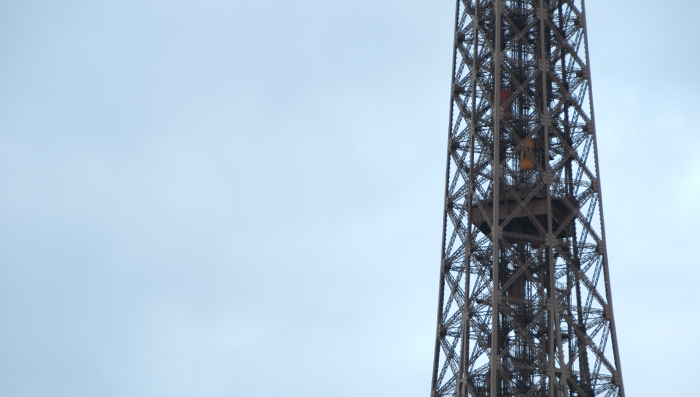
The elevators pass each other towards the top of the tower.
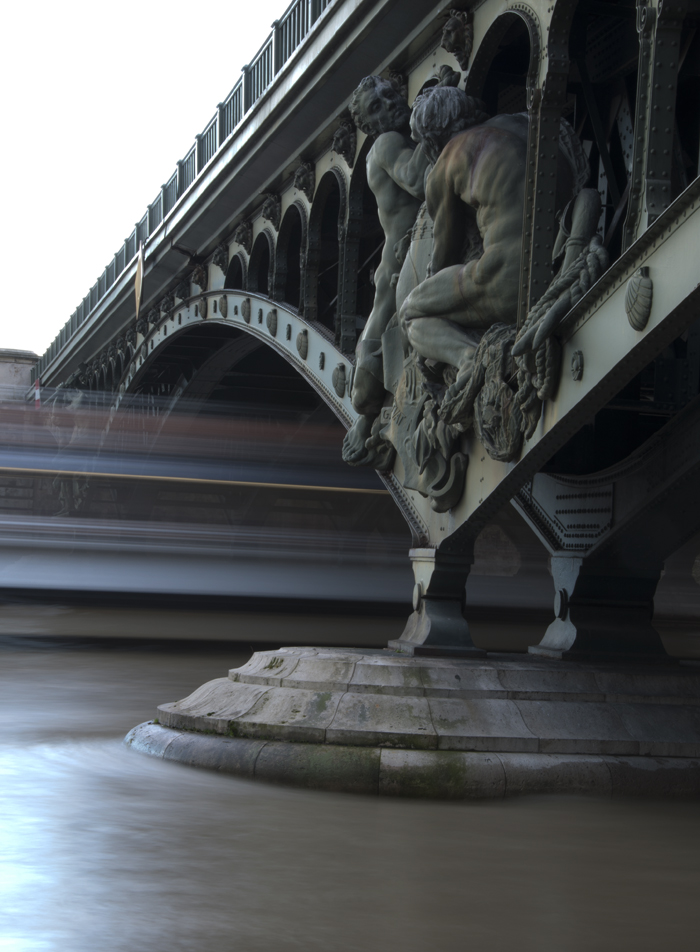
A tourist boat passes underneath Pont Bir-Hakeim, built in 1905 and later named for the victorious battle against the Nazis in Libya in 1942.

A half-submerged Georges Pompidou highway, looking south towards buildings on the Left Bank.
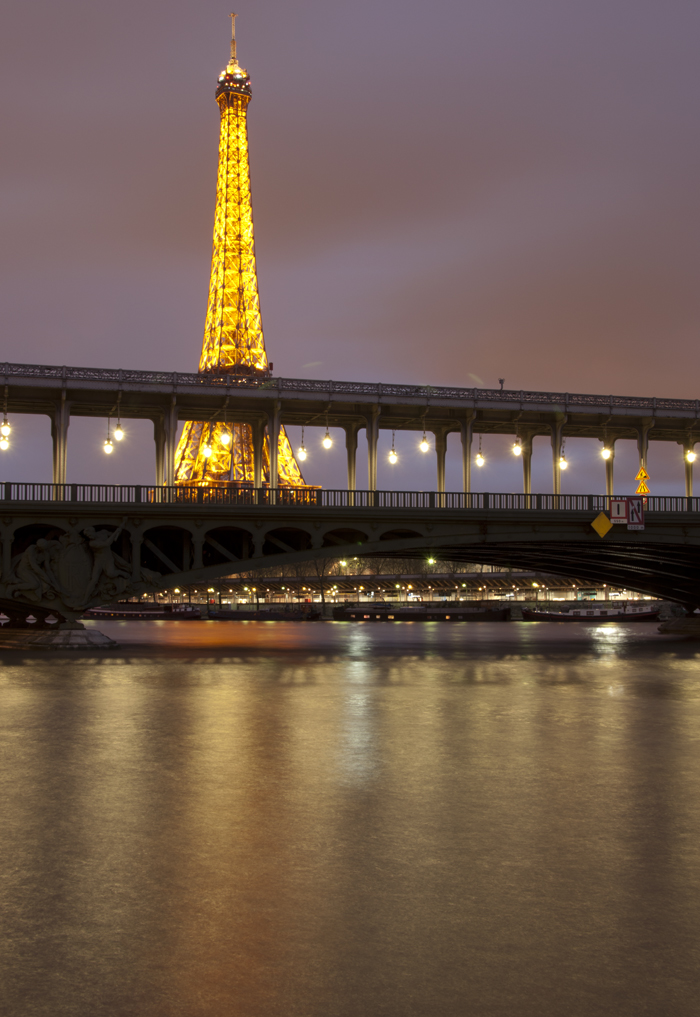
Eiffel Tower with Bir-Hakeim Bridge in the foreground.
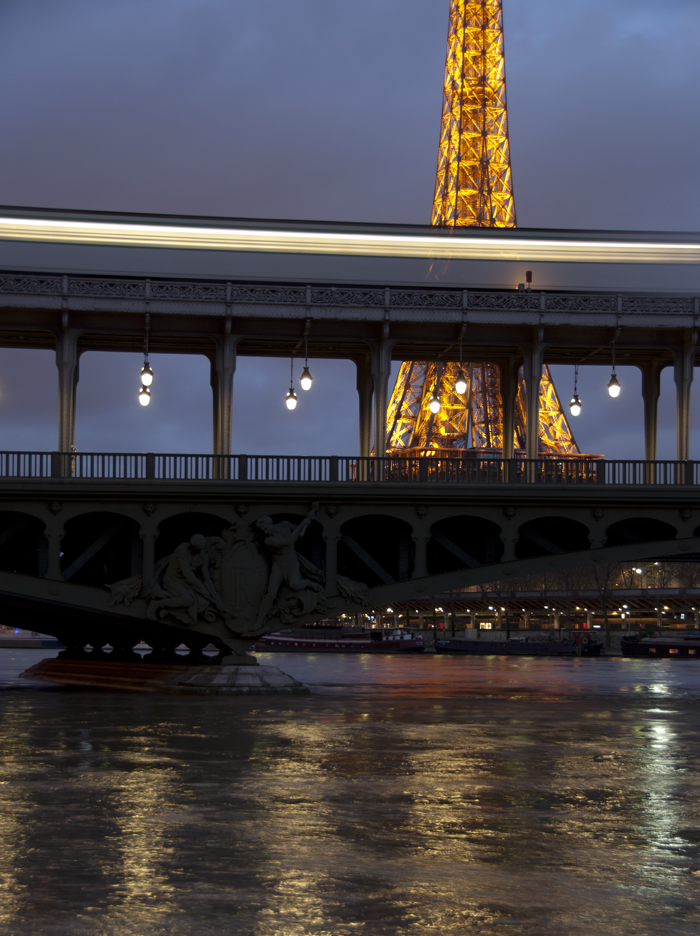
A train passes on Line 6 on top of Bir-Hakeim Bridge.

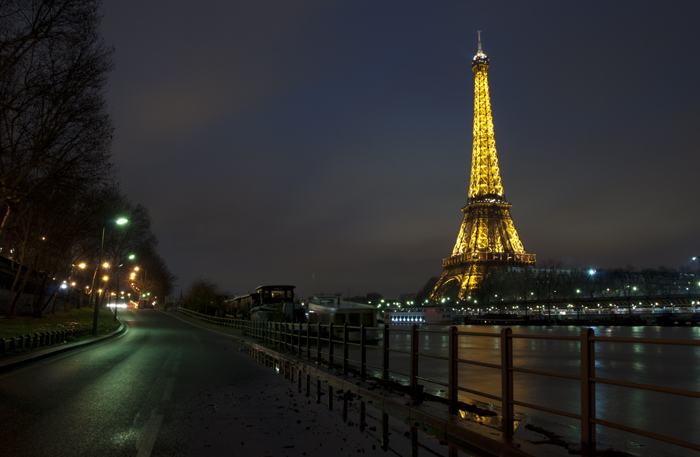

A tourist boat passes the Eiffel Tower, as shot from top of Bir-Hakeim Bridge.
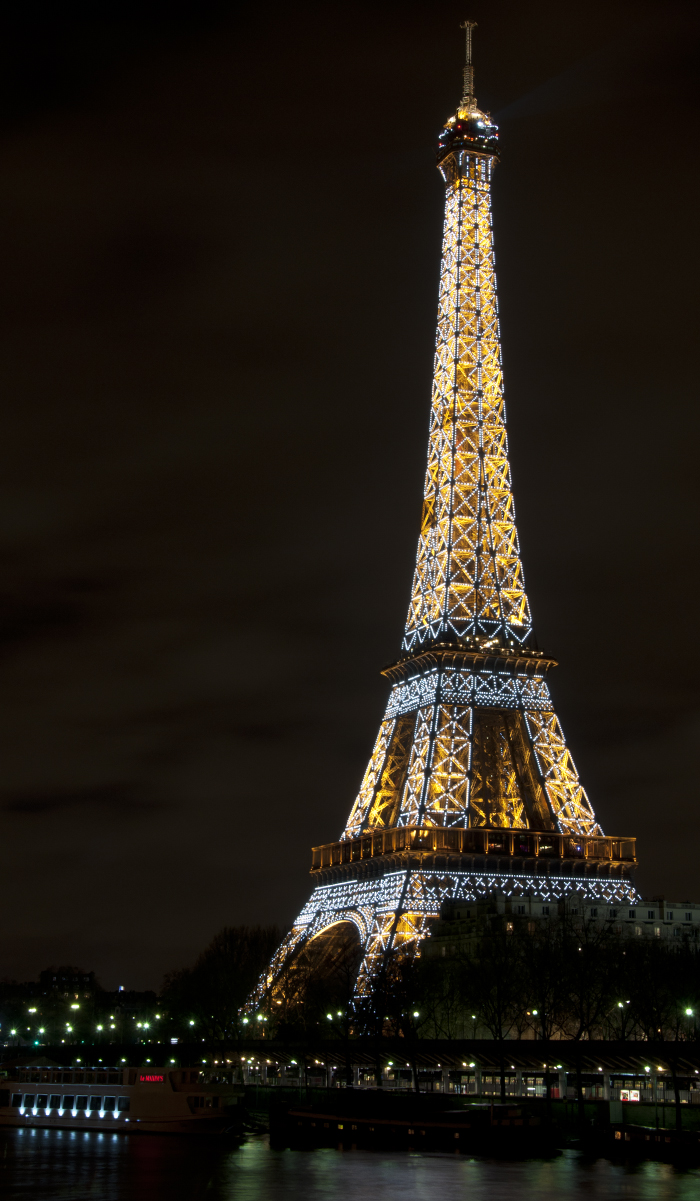
A long exposure shot of the Eiffel Tower “light show” that happens every hour, on the hour, after sunset.
In this photo, flashbulbs appear to all be illuminated at once when in fact they fire rapidly in quick succession.
Paris by Night: The Two Arches
Say “Parisian Arch” and most will think of the Arc de Triomphe. For good reason, too: the “Triumphal Arch” is one of the most famous monuments in Paris. The 164 foot stone structure was commissioned in 1806 by Emperor Napoleon after he defeated the Russo-Austrian Army at the Battle of Austerlitz (and completed three decades later). True to its origin, the Arc de Triomphe has been a pivotable symbol of France’s military might for two centuries. To this day, the French government celebrates Bastille Day every year by parading every type of vehicle it owns—from tanks and armored personel carriers to backhoes and small fire trucks.
Every other hour of the year, however, the arch hosts a more unrelenting and chaotic procession of civilian hardware unhindered by lanes or traffic signals. In fact, insurance companies refuse coverage to drivers who dare to enter this swirling mass of liability.
The Arc de Triomphe held its ground as the world’s largest triumphal arch until a larger one was built in 1982. Any guesses where it was built? Modern day world leader with a Napoleon-complex and careless disregard for misappropriating scarce resources? Yup. Kim Jong Il built one 33 feet taller in Pyongyang to commemorate his father, the founder of the Democratic People’s Republic of (North) Korea.
The Arc de Triomphe is also pivotal in the urban design of Paris, literally. It serves as the linchpin on the historic axis that connects Champs Elysées and the Louvre to the east with La Défense—and the second arch of Paris—to the west.
In 1989, La Grande Arche was built as a 20th century interpretation of Arc de Triomphe. Despite towering over the aforementioned arches at 330 feet, Pyongyang’s placement in the record books holds firm; La Grande Arche emphasizes humanity instead of military might (and thus is not a “triumphal arch”).
It serves as a government office building.
La Grand Arche is the architectural highlight of a business district built in the 1980’s to compete with London and Switzerland. Actually, this district was originally slated within historic Paris, but once the first high-rise was built (Montparnasse), the French cursed the ghastly addition to their cherished skyline, mandated that no future construction could challenge the height of the Eiffel Tower, and built La Défense to the northwest of the city, at the terminus of the “historic axis”.
I took an evening in late January to photograph both arches, starting with La Grande Arche at sunset, and ending with the Arc de Triomphe later that evening. They are only two metro stops away from one another. Unfortunately, most of the clouds cleared before they could be illuminated by the setting sun.
La Grande Arche, La Défense
High rises of the La Défense business district.
The unusual art installation at the base of the arch.
View from the steps of the La Grand Arche.
A carousel spins near a metal art installation. La Grand Arche looms in the background.
A woman stands in front of a spinning carousel.
Looking southeast on the historic axis towards Arc de Triomphe.
L’Arc de Triomphe
Jump on the Metro Line 1 and in 10 minutes, you will arrive at the Charles de Gaule station, directly underneath the Arc de Triomphe.
Le Arc de Triomphe with the Eiffel Tower in the background.
The blue flashing lights of a police van convoy pass the arch.
Resources:
A Birder in Paris (2012 Recap)
When my eyes met binoculars in 2012, they were likely in pursuit of the feathered occupants of Paris, from tits to creepers. My wife and I moved to the capital of France in early June and I averaged about one morning of birding every week until late November, when we traveled back home to Seattle by way of Eastern Europe for a month. I mostly birded in green-spaces near our flat just southwest of Paris (in the city of Boulogne-Billancourt) with periodic trips further afield.
With moderate effort, I tallied 72 species in the City of Light.
There aren’t many birders in Paris. I met four of them and while I learned quite a bit, I almost always birded solo (during the week). Consequently, my ears failed to find the less common songs/calls and I am sure my eyes missed a few of the expected fall migrants in all their dull greatness (i.e. phylloscopus warblers). I also missed spring migration entirely.
Highlights include a Lesser Redpoll working an alder with two European Goldfinches on November 8th, a European Honey-buzzard migrating over Parc des Beaumonts in mid-August, separate sightings of Tawny Owls in two different parks southwest of the city in the summer, two sightings of Black Woodpecker in the Bois de Boulogne, a pair of Hawfinches in early November, and several sightings of Eurasian Bullfinches throughout the year—the handsomest of the European line-up.
Biggest miss: Lesser Spotted Woodpecker. I’ve heard a couple but so far these small trunk-climbers have eluded me.

I’ve included a full species list below, with codes denoting where I saw them. Most locations are slightly outside Paris proper but all are easily accessible by the Paris metro system. Each code links to a full description (and MAP) in my blog post, “Birdwatching in Paris.”
- Bois de Boulogne (BdB)
- Parc de l’Ile St Germain (PiSG)
- Ile de Seguin (IdS)
- Parc du Beaumonts (PdB)
- Jardin des Plantes (JdP)
- Cimetiere du Pere Lachaise (CdPLC)
- Bois de Vincennes (BdV)
Canada Goose (BdV) — Flock on Lac Daumesnil, Bois de Vincennes.
Mute Swan (BdB–BdV) — Easy to spot in many of Paris’ waterways, especially in large park lakes.
Mallard (BdB–BdV) — Common on any large lake and on the Seine.
Common Pochard (BdV) — Wintering flock found in Lac de Minimes, in east Bois de Vincennes.
Ring-necked Pheasant (BdB) — Seen a couple times in the deeper recesses of Bois de Boulogne.
Great Crested Grebe (BdV) — Found in winter on Lac de Minimes, Bois de Vincennes.
Great Cormorant (BdB–PiSG–BdV) — Can be seen flying over many points in Paris, especially near water.
Gray Heron (BdB–BdV) — Hard to find on the fortified banks of the Seine. Can be found on smaller lakes with vegetated shores.
European Honey-buzzard (PdB) — Uncommon migrant through Paris. I joined expat birder David Thorns at his beloved Parc du Beaumonts on an afternoon in mid August and this was the first, and closest, raptor to pass us during the two hour skywatch.
Eurasian Sparrowhawk (BdB–BdV) — Uncommon but can be seen any time of year in wooded areas.
Eurasian Moorhen (BdB–JdP–BdV) — Common near lakes and streams. Surprisingly, I found a couple in Jardin des Plantes, well away from any lake.
Eurasian Coot (BdB–BdV) — Common in lakes, even the Seine.
Little Ringed Plover (IdS) — A pair were spotted in the dirt construction areas of Ile de Seguin in July.
Black-headed Gull (BdB–PiSG–IdS–BdV) — Widespread.
Herring Gull (JdP–BdV) — Uncommon but can be seen at or near any body of water, especially the Seine.
Common Tern (IdS) — Seen during migration on the Seine on Ile de Seguin.
Rock Pigeon (BdB–PiSG) — Widespread.
Stock Dove (BdB–JdP–BdV) — Widespread but uncommon and can be difficult to separate from the abundant Common Wood-Pigeon.
Common Wood-Pigeon (BdB–PiSG–IdS–PdB–JdP–CdPLC–BdV) — Widespread; one of the most abundant species in Paris. You can’t scan the skies without seeing several of these guys. Their silhouette is frustratingly similar to a raptor in flight to North American eyes.
Tawny Owl (BdB) — The alarm calls of Eurasian Blackbirds alerted me to my first Tawny Owl in Domaine Saint-Cloud (across the river from Boulogne-Billancourt). My second was seen the following week after hearing the startled call of a Green Woodpecker on a run through the Bois de Boulogne.
Common Swift (BdB–PdB) — Look upwards in Summer, and you can’t miss Common Swifts—a fixture of Parisian skies.
Common Kingfisher (BdV) — A single bird fishing a small stream in Bois de Vincennes.
Middle Spotted Woodpecker (BdB–BdV) — I encountered this species on four separate occasions in the Bois de Boulogne; once in Bois de Vincennes.
Great Spotted Woodpecker (BdB–PiSG–CdPLC–BdV) — The most common woodpecker in Paris. Uncommon to common in nearly any park with mature trees.
Black Woodpecker (BdB) — Chasing down the sounds of a foraging woodpecker yielded fantastic views of my first Black Woodpecker in Bois de Boulogne in August. I found a second, more vocal bird in November.
Green Woodpecker (BdB–PiSG–BdV) — The second most frequently encountered woodpecker. Very vocal.
Eurasian Kestrel (BdB–BdV) — Six sightings, all flyovers or perched on edge of open patches in wooded parks.
Eurasian Hobby (CdPLC) — One quick fly-by in Cimetiere du Pere Lachaise in mid October.
Rose-ringed Parakeet (BdB–PiSG–JdP–BdV) — Most frequently seen at Jardin des Plantes, but possible elsewhere as the breeding population has expanded in recent years.
Eurasian Jay (BdB–PiSG–JdP–CdPLC–BdV) — Common, likely in any wooded park.
Eurasian Magpie (BdB–PiSG–JdP–CdPLC–BdV) — Widespread and abundant (and vocal).
Rook (BdB) — Three flew over Bois de Boulogne in early November.
Carrion Crow (BdB–PiSG–JdP–CdPLC–BdV) — Widespread and common throughout the city.
Barn Swallow (PdB) — Two flew past skywatch hill at Parc des Beaumonts in August.
Common House-Martin (BdB) — Common at north end of Lac Inferieur in Bois de Boulogne in summer.
Marsh Tit (BdB–BdV) — Uncommon in more wooded parks. Often in mixed flocks of tits.
Coal Tit (BdB–PiSG–CdPLC–BdV) — First sighting was two birds behind our flat in a construction area. Possible (but uncommon) in many of the cities parks.
Crested Tit (BdB–BdV) — Uncommon in parks with patches of conifer trees.
Great Tit (BdB–PiSG–IdS–JdP–CdPLC–BdV) — The most common tit. Pish in front of anything green and you’ll attract a Great Tit.
Eurasian Blue Tit (BdB–PiSG–JdP–CdPLC–BdV) — The second most common tit (see location instructions for Great Tit)
Long-tailed Tit (BdB–PiSG–BdV) — Flocks of varying sizes were found in several parks.
Eurasian Nuthatch (BdB–PiSG–JdP–CdPLC–BdV) — Possible anywhere there are mature trees.
Short-toed Treecreeper (BdB–PiSG–JdP–CdPLC–BdV) — Likely anywhere there are mature trees. Even saw one working a grave in Montparnasse Cemetery.
Eurasian Wren (BdB–PiSG–JdP–CdPLC–BdV) — Possible anywhere there is a thick understory.
Goldcrest (BdB–JdP–BdV) — Flocks of varying sizes are possible year-round, especially in stands of conifers.
Firecrest (BdB–CdPLC) — Most likely to be seen during migration, but a smaller number stay for the winter.
Willow Warbler (BdB–PiSG) — Most easily seen during migration. Paler legs than more common Chiffchaff.
Common Chiffchaff (BdB–PiSG–PdB–CdPLC) — Song can be heard all summer. Less numerous but still possible in winter.
Blackcap (BdB–PiSG–CdPLC) — Widespread in Parisian parks and very responsive to pishing. Breeds in parks and gardens throughout Paris.
Greater Whitethroat (PiSG) — I spotted my first during fall migration in Parc de l’Ile St Germaine.
Spotted Flycatcher (BdB–PiSG) — Breeds in wooded parks throughout Paris but I found my first in late August during migration in two locations.
European Robin (BdB–PiSG–JdP–CdPLC–BdV) — Common and widespread wherever there is decent understory.
European Pied Flycatcher (BdB–PiSG–CdPLC) — Uncommon migrant. Found my first in Bois de Boulogne, my second in Parc de l’Ile Saint Germain and my third during a small migratory fallout in Cimetiere du Pere Lachaise.
Black Redstart (Domaine de Saint-Cloud) — There was a reliable pair across the river from Boulogne in Parc de Saint-Cloud.
Eurasian Blackbird (BdB–PiSG–JdP–CdPLC–BdV) — Widespread and common in any city park.
Fieldfare (PiSG) — A thrush that winters in Paris. I found my first in November.
Redwing (BdB) — Another wintering thrush. I found my first in Bois de Boulogne in November with a flock of Eurasian Blackbirds visiting a fruiting conifer tree.
Song Thrush (BdB–PiSG–CdPLC–BdV) — A boisterous songster. Present in Paris year-round but most abundant during migration.
Mistle Thrush (BdB–PiSG–BdV) — I found my first in October in Bois de Boulogne and had three additional sightings (in other locations) through early November.
European Starling (BdB–PiSG–JdP–CdPLC–BdV) — Abundant and widespread throughout the city.
Dunnock (BdB–PiSG–JdP) — A member of the accentor family. It took me several weeks to find my first but it’s a fairly common bird in parks with brambles.
Western Yellow Wagtail (IdS) — Seen along the fortified banks of the Seine, across from Ile de Seguin.
Gray Wagtail (BdB) — Seen near water in Bois de Boulogne.
Common Chaffinch (BdB–PiSG–BdV) — One of most common contributors to the dawn chorus in spring and summer. Can be found year-round.
Eurasian Bullfinch (BdB–PiSG) — In my opinion, the most attractive of Europe’s urban birds. I chased down some soft call notes in June to find a pair foraging quietly in the grass (beneath a stand of conifers) just north of the Reserve Ornithologique in Bois de Boulogne. I didn’t see any others until I found a small (but reliable) flock visiting some fruiting shrubs in Parc de l’Ile Saint Germain. Handsome devils.
European Greenfinch (BdB–PiSG–JdP–CdPLC–BdV) — Possible in many parks, especially in fall. Had several males singing from rooftop TV antennas near our flat.
Lesser Redpoll (PiSG) — Probably the most unexpected bird I found in Paris. While birding in early November in Parc de l’Ile Saint Germain, I was attracted to a small flock of European Goldfinches flying amongst a small patch of alders. I noticed that one was particularly tan. Once I noticed the subtle reddish cap and black mask, I knew I had a redpoll but I had never seen one so awash in brown. I studied the bird as it foraged for several minutes. My Princeton Birds of Europe guide was printed in 1999 and only had Common and Arctic (Hoary) Redpoll. Once I returned home, I learned that the cabaret subspecies that best matched this bird (as depicted in my book) was split in to a new species: Lesser Redpoll. I returned to this patch of alders several more times and never saw any other redpolls.
Eurasian Siskin (PiSG) — I finally found my first siskins near the patch of alders that hosted the Lesser Redpoll above. After several attempts, I found four that were visiting a small pond as I was leaving the park via the western entrance.
European Goldfinch (BdB–PiSG–IdS–BdV) — This was one of the first birds I saw on my first morning of birding in Paris (in Parc de Saint-Cloud). It was a full month before I found another five working some thistle on Ile de Seguin. They became more common, and formed larger flocks, in early November, when I found them at several different locations.
European Serin (PiSG–IdS) — In summer, Ile de Seguin was the most reliable spot for this species, where they were the most boisterous songster. A small flock joined the finch fest that had formed in early November in Parc de l’Ile Saint Germain.
Hawfinch (BdB) — Early November brought a pair of Hawfinches to the parcours sportif, a fitness trail that is my favorite place to bird in Bois de Boulogne.
House Sparrow (PiSG–IdS–JdP–BdV) — As one might expect, this species is fairly widespread but not as common as it is back in North America.
Crapping on Napoleon’s Head
Carved in stone or forged in metal, statues are designed to make generation of people stop, gaze upward in awe, and reflect on someone who liberated/reigned/invented/ruled/fought/decreed/conquered themselves in to a pivotal moment in the evolution of a country or culture.
A statue is an eternal reminder that all who pass underneath should be forever indebted to the greatness this person bestowed on history.
Or maybe it’s just an easy place for a bird to take a crap.
I’ve recently noted the subtle humor in how many of the world’s statues, which depict the powerful men and women in chiseled greatness, are now little more than a perch on which a bird can take a momentary break from the shackles of gravity and relieve itself of the weight of its breakfast.
Imagine a self-aggrandizing ruler – a dictator perhaps – commissioning an imposing representation of himself, forged in metal, to loom over his fearful subjects as a constant reminder of his Draconian rule. Well, place a pigeon directly on top of his head and that foreboding presence dissipates as quickly as the whitewash running down his iron cheek.
I have had several opportunities to photograph birds on statues in Europe. Maybe it’s because Europe has a long, eventful history formed by powerful people. Maybe Europe has especially productive ironworkers and stone masons. Or maybe it’s because Europe is home to some particularly irreverent birds.
Zurich, Switzerland
On top a large, muscular stallion with a well-worn battle axe at his side, Hans Waldmann—15th century mayor of Zurich—could do little to dissuade this insolent Black-headed Gull. The bird was fortunate that this depiction of the Swiss military leader had a head on which to perch; Waldmann was relieved of his in 1489, due to accusations of financial corruption and sodomy.
Prague, Czech Republic
The neck of St. Ludmilla buckles under the weight of two complacent Eurasian Jackdaws. This statue is one of thirty lining Charles Bridge, a top tourist destination in Prague. While patron saint of many things—including converts, duchesses, Czech Republic, problems with in-laws—corvids and avian excrement are not listed among them.
Prague, Czech Republic
A Rock Pigeon cranes its neck pensively a top a statue of Joseh Jungmann, widely regarded as the creator of the Czech language and phrases like Slez z mé zasrané hlavy! (“Get off my bleeping head!”)
Prague, Czech Republic
The perfectly coiffed coils of Jan Hus are too irresistible to the dirty feet of this Rock Pigeon, who returns the favor by looking unabashedly in an opposing direction. Huss’ resisted the Catholic Church by insisting to preach in the native vernacular instead of mandated latin, a heresy that had him burned at the stake and the catalyst for the Hussite Wars between Catholics and Protestants. Hus became a symbol of strength for the Czech people as they suffered under oppressive regimes throughout history, including Habsburgs, Russians, Communists, and now, Guano.
Prague, Czech Republic
Neither his proximity to cultural icon Jan Hus, nor the fact that he was exiled during the Thirty Years War in the 17th century, nor his smooth, bulbous dome spared this gentleman from the ignominious talons of a pair of Rock Pigeons.
Versailles, France
A Black-headed Gull oblivious to the angel directly beneath it—unperturbed by her much larger wings. Perhaps the gull feels vindicated by dominating a statue at the entrance of one of the most opulently-decorated castles in the world. Gulls hate extravagant excess. Unless it involves french fries.
Vienna, Austria
Neither the armor depicted in this statue, nor the plumes that could have come from a distant cousin, could scare away this Hooded Crow. Instead this disinterested corvid casts an aloof gaze from this 18th century perch down on to the 1,441 room Schönbrunn Palace beneath it. Maybe the crows are the ones who literally defaced this statue and replaced it with a log. Crafty birds.
Marseille, France
A Yellow-legged Gull barely musters a yawn as Jesus Christ – the inspiration for one of the world’s most prolific religions – coils in pain directly underneath him. The bird doesn’t much care for the expansive view of France’s second largest city directly behind it, nor the fact that Jesus’ consoler is buckling under its weight, pushing her face directly on to his crown of thorns.
Pisa, Italy
A male pigeon struts amorously towards a female on the back of the Capitoline Wolf, a statue that depicts the founding of Rome. Most wouldn’t consider a metallic depiction of twin babies suckling from the plump teet of a she-wolf to be a powerful aphrodisiac, but pigeons are perhaps the most sexually-depraved of any bird.
Seville, Spain
The powerful pipes of Antonio Mairena, a famous flamenco singer from southern Spain, couldn’t scare off this domestic pigeon, nor could his smooth, bald head prevent the pigeons feet from grabbing hold. Somewhere deep inside the psyche of pigeon must lay at least some appreciation for this art form native to Seville: of all the white wash streaming down the side of Antonio’s head, almost none made it inside his capacious mouth. Classy.
Rome, Italy
Recent studies suggest that pigeons don’t believe in the afterlife, which probably explains this birds lackadaisical gaze towards an angel on the Sant’Angelo Bridge in the heart of Rome. Neither the freakishly large wings of this angel nor the fact that it was armed with a lance dissuaded this bird – nor the House Sparrow on the top her head – from roosting.
Venice, Italy
Pigeons are notorious for having exceptionally low literacy rates amongst birds. Certainly this individual didn’t even know it’d taken residence on the head of Niccolo Tommaseo, a “Dalmatian linguist” and writer from Italy. I believe this means he wrote about the tongues of spotted dogs, which seems like an awfully esoteric topic. That didn’t matter to this pigeon; it was just thankful that Niccolo wrote about enough canine tongues to warrant a tall and intricately carved perch.
Resources
- http://en.wikipedia.org/wiki/Hans_Waldmann_(mayor)
- http://en.wikipedia.org/wiki/Ludmila_of_Bohemia
- http://en.wikipedia.org/wiki/Josef_Jungmann
- http://www.praguestory.com/2012/05/jan-hus-memorial-old-town-square.html
- http://www.visitingvienna.com/schonbrunn/gloriette/
- http://en.wikipedia.org/wiki/Sch%C3%B6nbrunn_Palace
- http://en.wikipedia.org/wiki/Notre-Dame_de_la_Garde
- http://en.wikipedia.org/wiki/Marseille
- http://en.wikipedia.org/wiki/Capitoline_Wolf
- http://en.wikipedia.org/wiki/Antonio_Mairena
- http://en.wikipedia.org/wiki/Ponte_Sant%27Angelo
- http://en.wikipedia.org/wiki/Niccol%C3%B2_Tommaseo
Paris by Night: Cathedrale Notre Dame
What do you think of when I say “Notre Dame.”
OK, now stop chanting “Rudy” and imagine that I said it in a more dignified air: “NOOOH-truh DAAAAAAHM.”
Yup, that one.
After several months in PEH-reee, Kristi and I had walked past this stone postcard model numerous times, pausing briefly to take snapshots. This church—arguably the most iconic in Europe—was worth more. One October afternoon, I dusted off my tripod and descended into the tourist hive to take some shots at sunset.
As one might expect, this building is really, really old. The first stone was laid in 1146 under the direction of Maurice de Sully, Bishop of Paris, on a site that had hosted various religious buildings for a millennia. Amazingly, many of those who built the church did so without payment (and probably working more than 35 hours a week) nor the hope they’d ever live to see it completed. Or that their children would; or their children’s children. Notre Dame was completed eight generations later in the 13th century.
It is widely considered to be one of the best examples of the French Gothic style of architecture. The flying buttresses—arches that follow the roofline out to large external pillars—distributed the weight of the roof out away from the building. This architectural innovation allowed for taller, thinner walls and deflected the overwhelming pressure away from the stained glass windows (thereby sparing churchgoers from the resulting technicolor shrapnel).
By the mid-19th century, it had fallen victim to centuries of neglect and was slated for demolition. It was ultimately saved by a spinally-impaired occupant penned by Victor Hugo who reinvigorated interest in both the church and medieval architecture.
Homes and other urban clutter in front of the church were cleared in the late 19th century to create Place du Parvis Notre Dame. Aside from improved sight lines to the church facade, this square affords visitors an opportunity to stand at Kilometre Zero, the point from which all distances to Paris are measured throughout the country.
The first two photographs are from Pont de l’Archevêché to the east, showing what a 90° turn of a polarized filter can do for the clouds in the sky. The sunset shots are from across the river, further east over Pont Saint-Louis. The night shots are from Place du Parvis Notre Dame on the west side of the church.


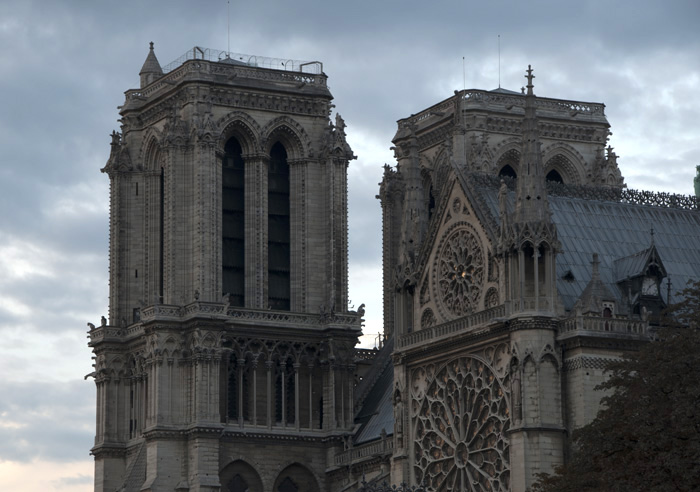
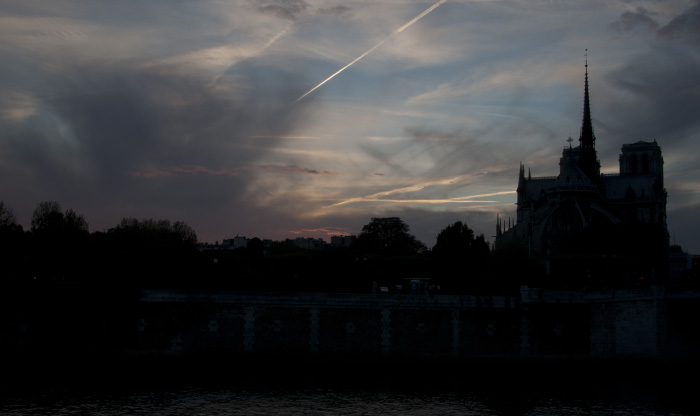
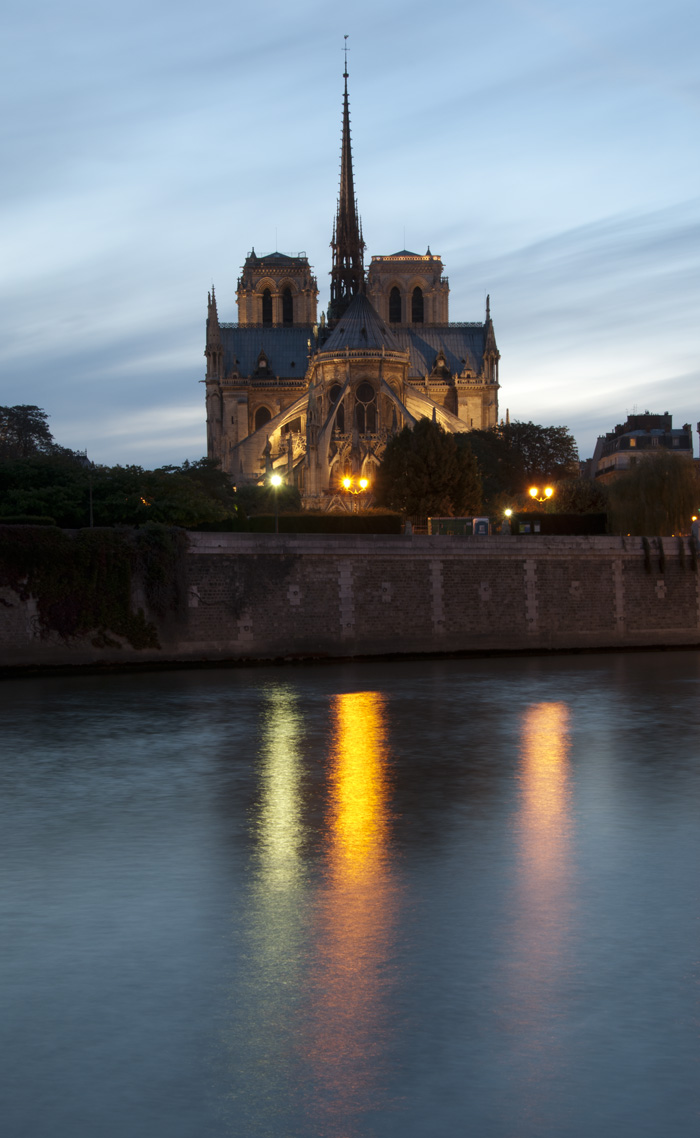
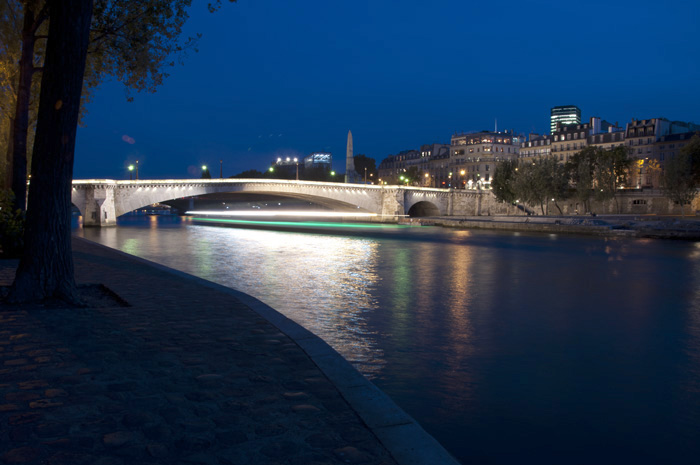
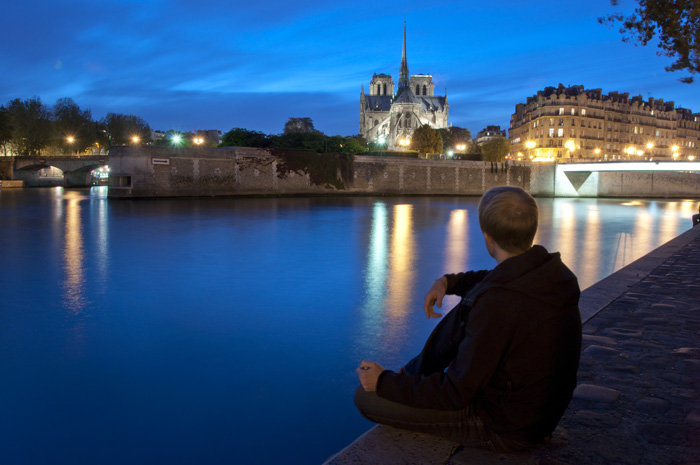
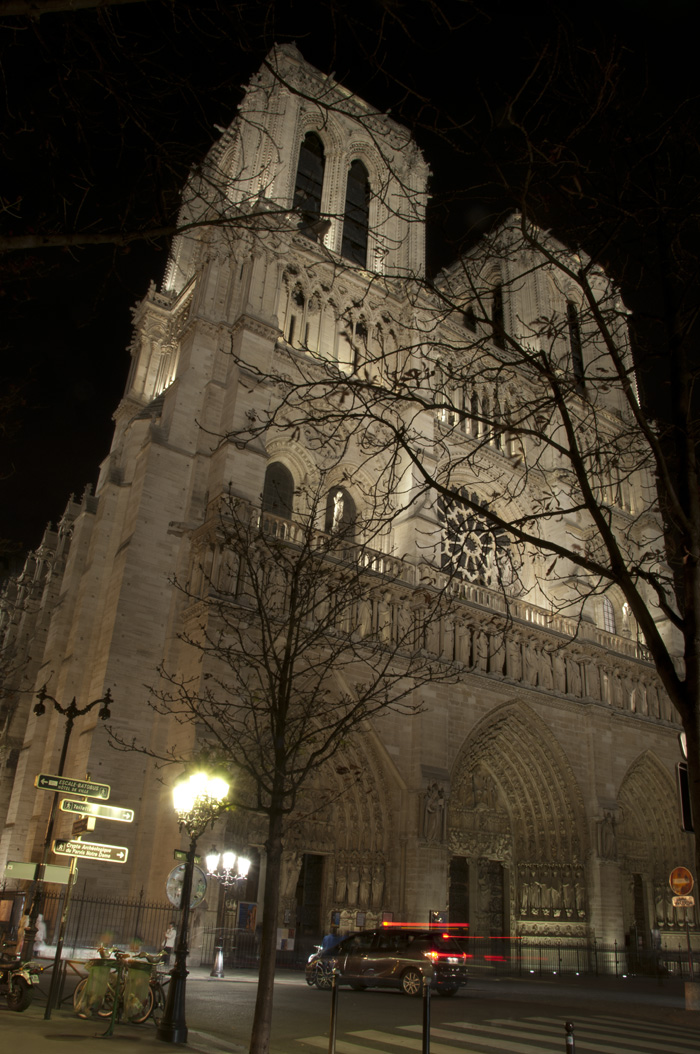
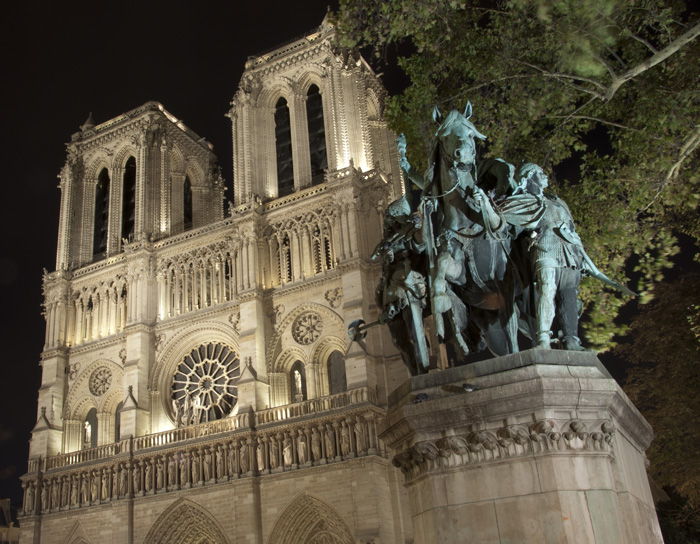
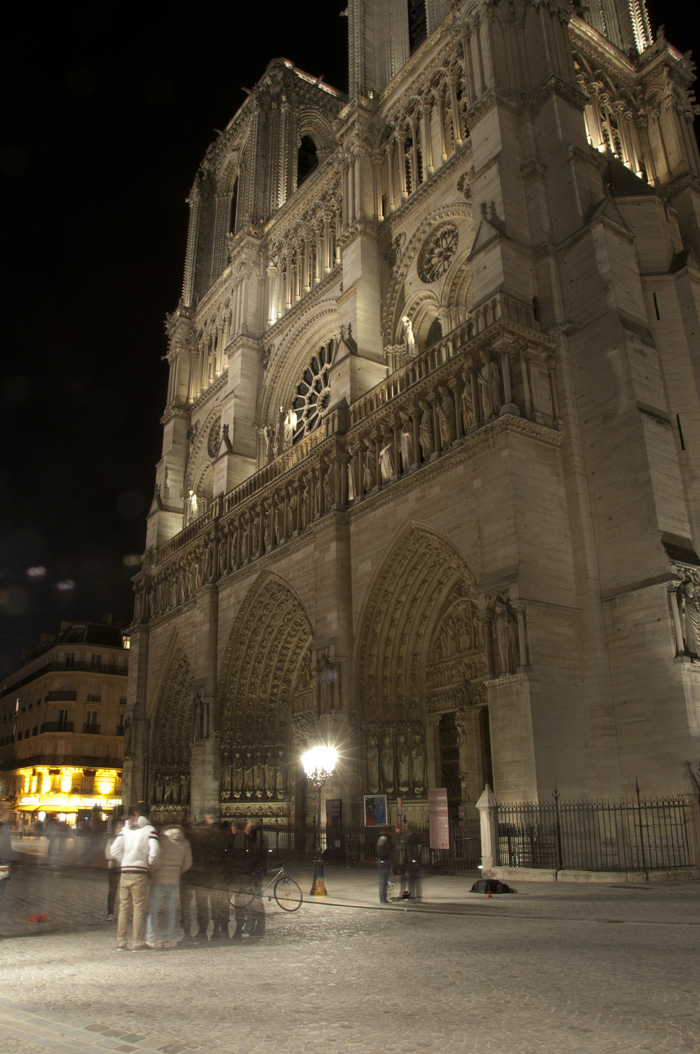
Paris by Night: Place de la Concorde
Located in the 8th arrondissement to the north of the Seine, Place de la Concorde is one of the most famous public squares in Paris. Built in 1755 as Place de Louis XV, it was later incorporated by Georges-Eugene Haussmann in the late 19th century as a pivot in a grand avenue that connects Arc d’Triomphe and Champs d’Élysées to the west and Tuileries Garden and The Louvre to the east.
After the French Revolution in 1789, the statue of Louis XV (where the obelisk currently stands) was replaced with a guillotine and many notable members in French history—including Louis XVI and Marie Antoinette—were relieved of their heads. The execution device was finally removed in 1795, perhaps driven by the unbearable stench and an overly dull blade—over 1,300 people were beheaded in a single month during the peak of activity the prior year.
The 3,300-year-old Egyptian obelisk standing in the center once graced the entrance to the Luxor temple. It was one of two gifted to France by Egypt in the mid 19th century; the other proved too difficult to move and remained in Egypt.
After photographing the Eiffel Tower from the nearby banks of the Seine, I set up my tripod to capture this ancient obelisk with the temporary ferris wheel as a backdrop. The moon was a nice, gleaming white cherry on top.
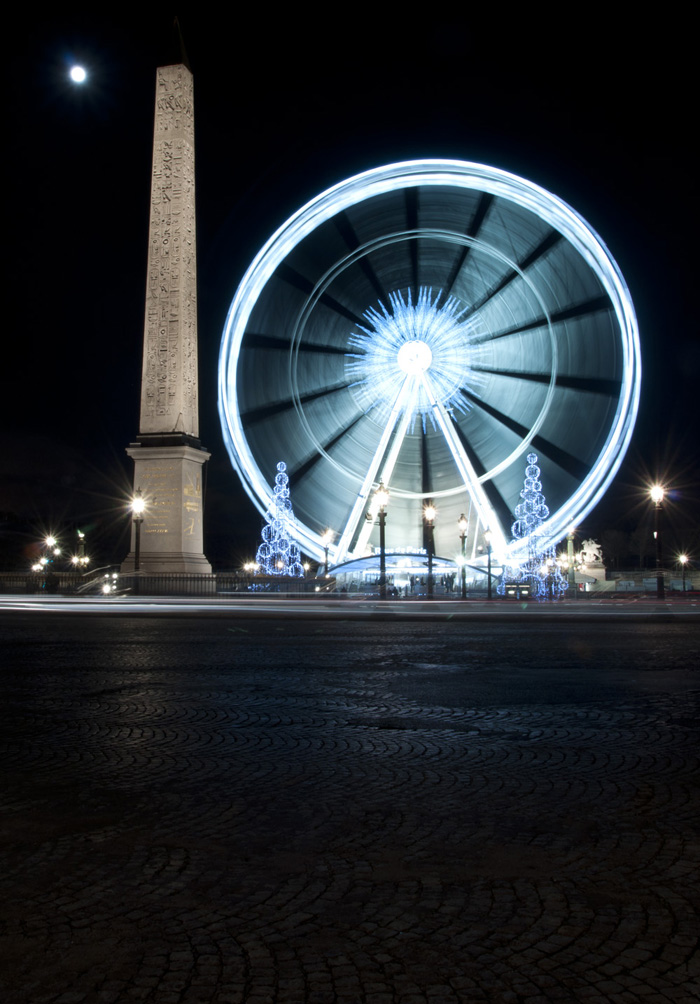
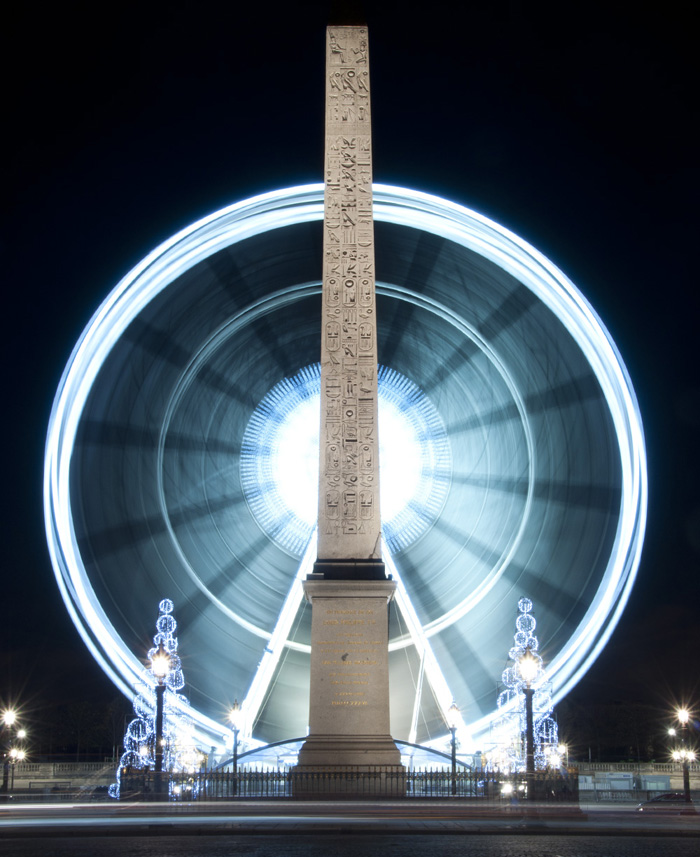
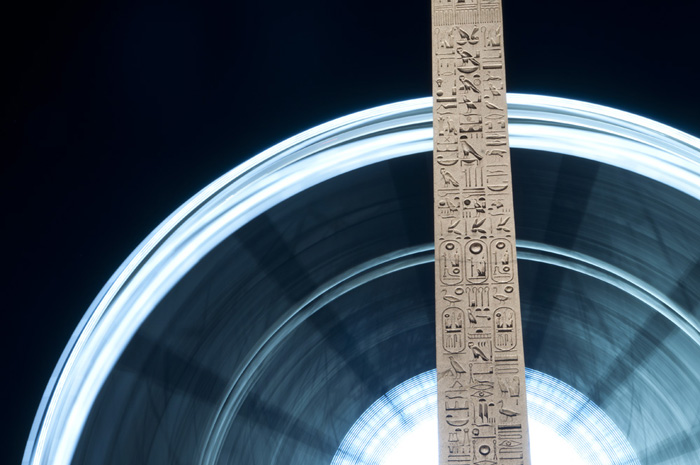
Resources:
Paris by Night: Eiffel Tower
I peered outside our apartment window and saw a thick cluster of clouds smothering a blue sky.
Today could be the day.
I recently decided that it was morally deplorable to live in Paris for six months and not have a picture of the Eiffel Tower at sunset. At 3:30pm, I packed up my camera and tripod and headed for the Trocadero metro stop. Located on the other side of the Seine, this location features two imposing buildings that form the sites on top of an old rifle, perfectly framing the Eiffel Tower at the end of the barrel.
I was set up by 4:20pm. Unfortunately, the anticipated sunset colors never materialized, but despite that and freezing temperatures, it was still worth my time.
The Eiffel Tower is arguably the most iconic landmark in the world and, surprisingly, it was widely derided after it was built for the 1889 Exposition Universelle. The Eiffel Tower was to be dismantled in the early 20th century but a radio antenna installed by its designer Gustav Eiffel in 1909 proved too valuable to the French Army. Two and a half million rivets hold together the “iron asparagus.”
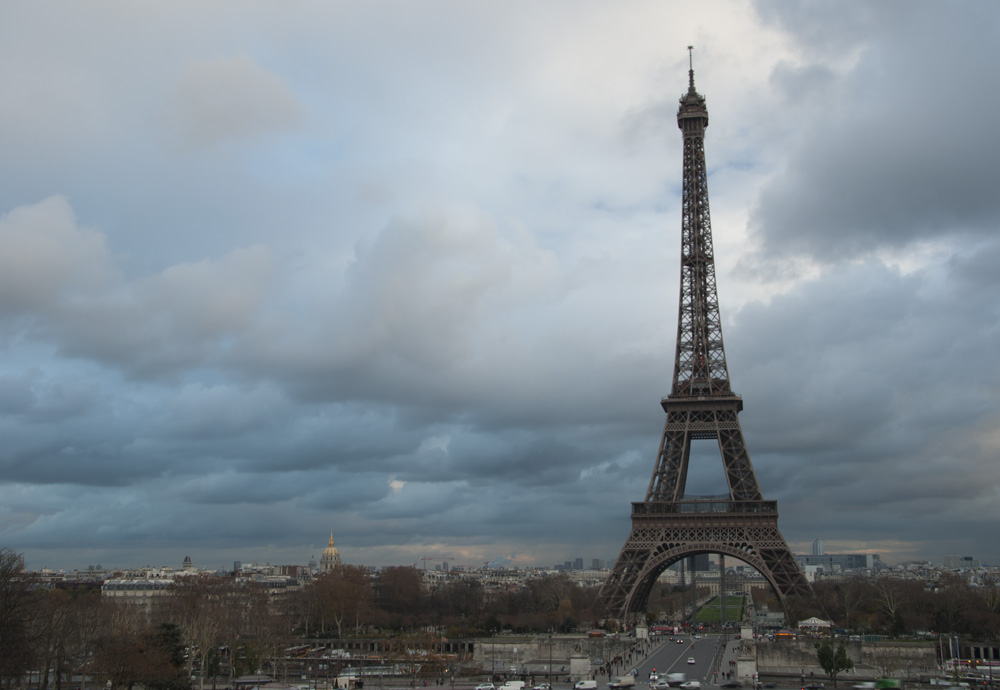
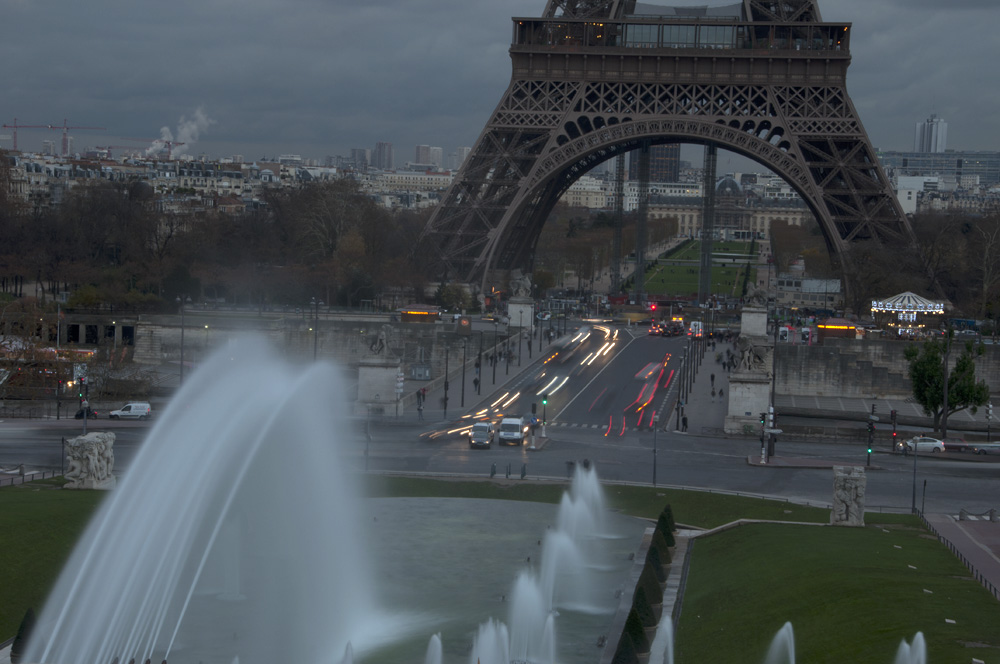
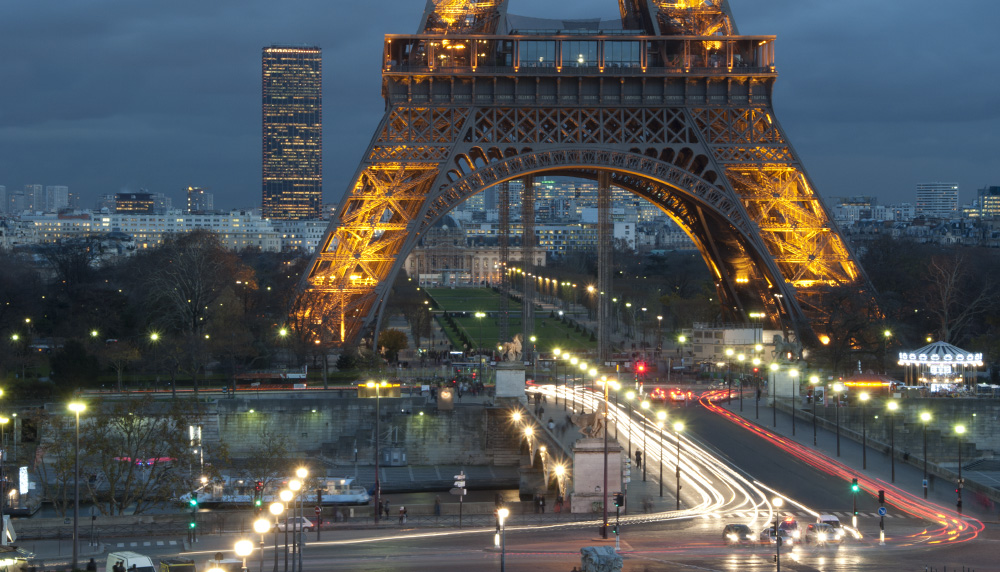
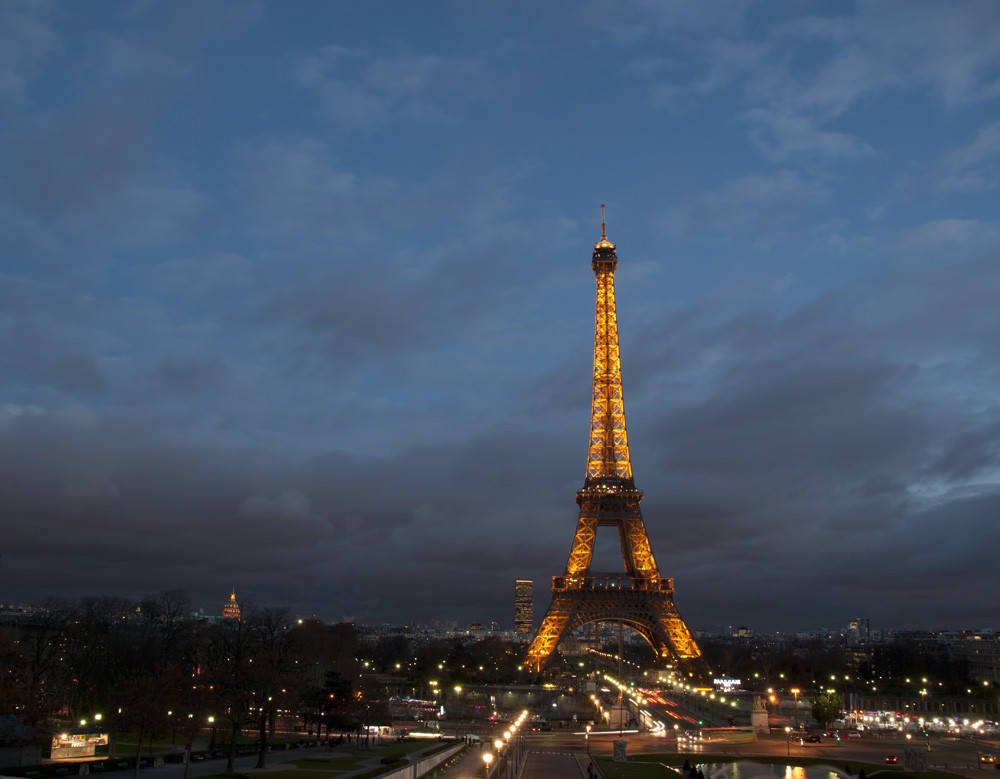

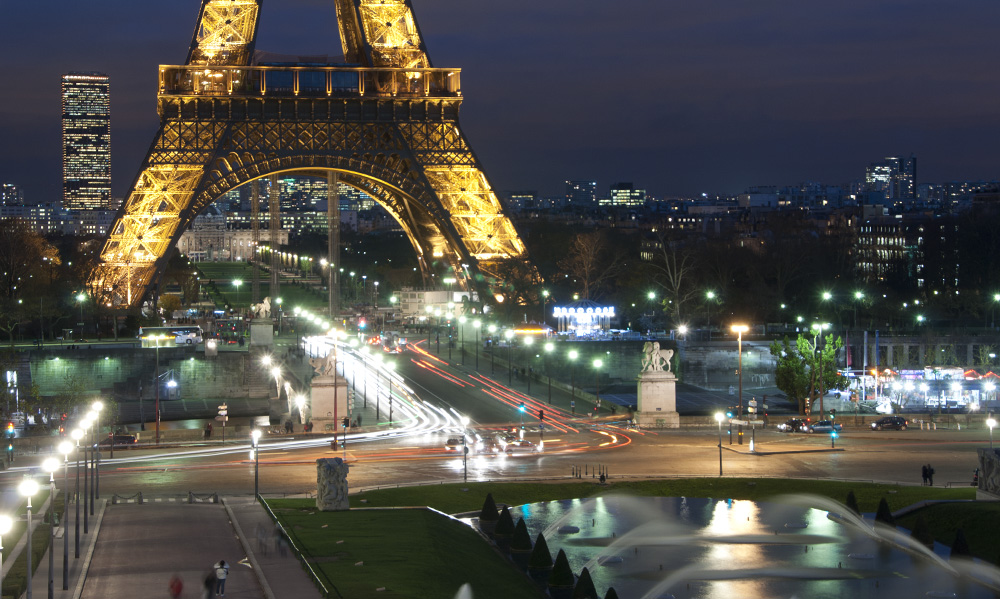
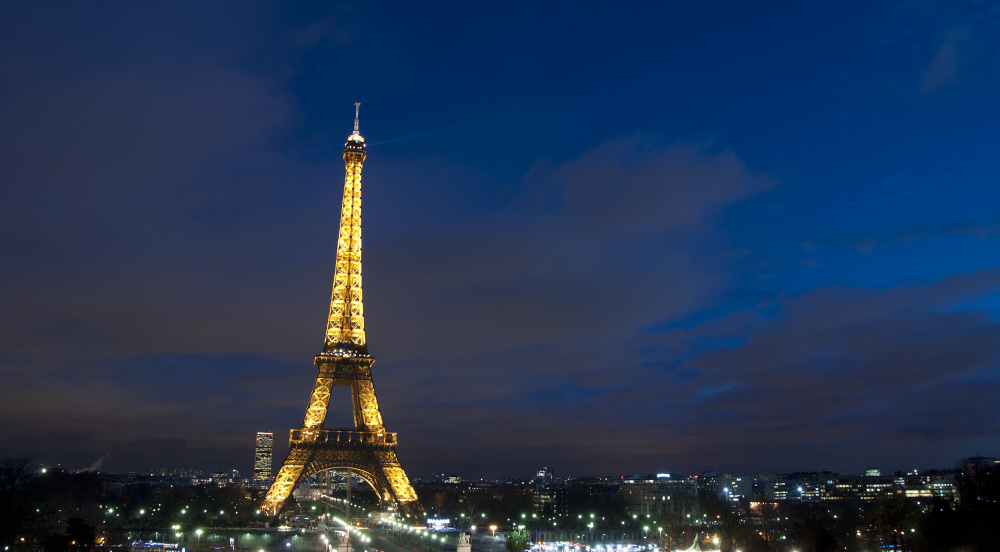
Unfortunately, my battery died and I had forgotten my spare at home. Fortunately, I already had plans to meet Kristi at l’Opera. I walked from Trocadero to Opera, received my charged battery, and moved quickly to Place de la Concorde on the Seine. I was only able to snap a couple of photos of the Eiffel Tower during its hourly light show—consisting of hundreds of pulsating flashbulbs—before it returned to its normal nocturnal state.


Turning the camera directly across the Seine, I captured a photo of Assemblée Nationale with Pont de la Concorde to the left. I especially love how the tree shadow projects over the river.
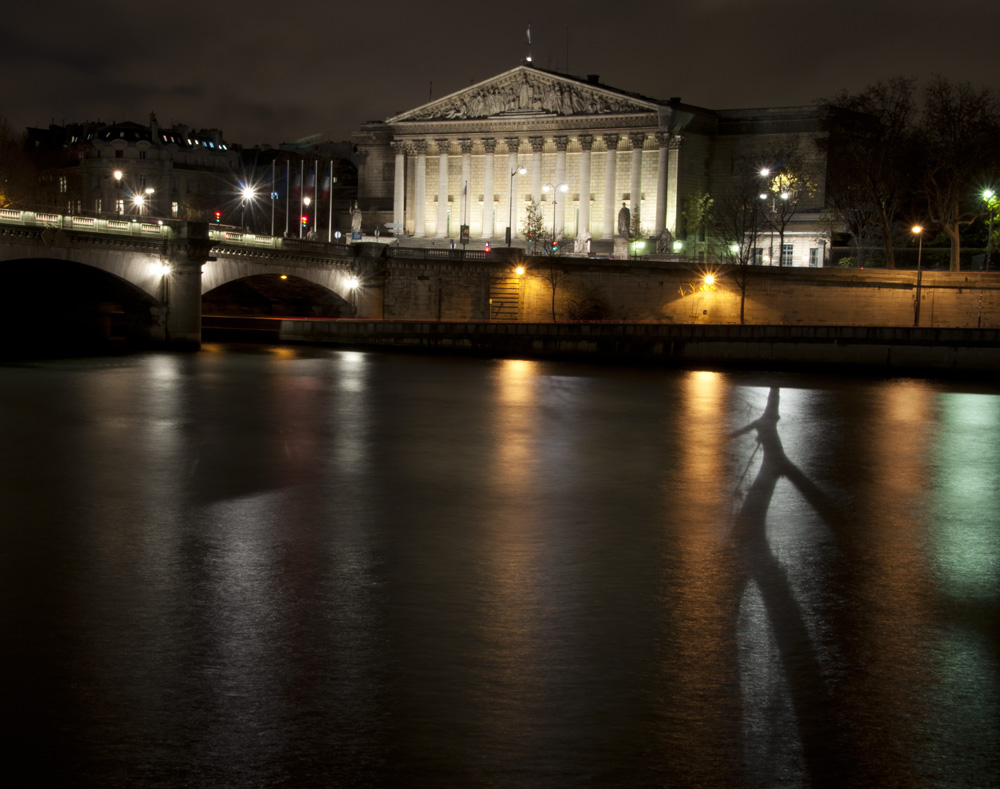
Resources:
Sh-t that wouldn’t fly back home: Paris edition
Tasting unfamiliar foods, taking wild forms of transportation, or immersing yourself in an incomprehensible language are the types of experiences that drive most to travel. Some are locked away in travel journals, others are fodder at cocktail parties, but it’s those rare experiences that challenge a persons fervent beliefs of what’s right, what’s wrong, what’s normal, and what’s just plain weird.
Like sweet mayonnaise and canned corn on pizza (Japan); like a young teenager using his finger to plug the barrel of his aging Kalashnikov assault rifle as he boards your bus (Laos); like hearing someone loudly clear their throat on an airplane, and expel the contents on the carpeted floor (China). I like to categorize such experiences as “sh*t that wouldn’t fly back home.” While they can be mystifying, or even infuriating, at moment of exposure, I’d argue that they keep the soles of our walking shoes thin and our frequent flier portfolios plump.
Here’s my first installment: Shit That Wouldn’t Fly Back Home – Paris Edition. Neither wrong, nor right—just different.
Parking
As with most densely populated metropolises, parking in Paris is at a premium. Subterranean garages exist largely for day-tripping tourists, so if residents don’t want to pay $350 a month to park the cars, they need to duke it out on the streets to find a rare vacant piece of curbside real estate. And some are forced to get creative. A Smart Car, one of the smallest vehicles on the road, can wedge its sub-nine foot chassis nearly anywhere. But what if the parking spot is even smaller than that? How about backing your car up perpendicularly to the curb and gunning it?
Sidewalks are saved from parked cars through ample use of metal pillars, which are spaced close enough to both each other and the curb to dissuade even the smallest vehicles from blocking the pedestrian thoroughfare. But this “out-of-the-box” thinker found a solution: just park on the actual sidewalk.
On a recent walk near the Eiffel Tower, I watched a new Audi park at the apex of a corner, throw on his emergency flashers, get out to admire the fact that he was effectively obstructing both crosswalks, and tucked into a local café for dinner. These brazen infarctions are startling for a Seattleite who received a $75 ticket when six inches of his bumper was hanging over a yellow curb (thank you City of Bellevue).
Dog Sh*t on Street
I’ve explored this topic in another post ad naseum (literally, I almost threw up) but this ranks high in the “shit that wouldn’t fly back home.” I am well aware that plenty of dog excrement isn’t picked up in the U.S. but few owners would have the audacity to encourage it in broad daylight, on a sidewalk, in the direct line of sight—and smell—of numerous passerby. Fines for such infarctions may be relatively light in the U.S., but public scorn is strong enough to keep such activities in dark alleys and secluded parks.
The speed with which cars approach pedestrian crosswalks
Rules for pedestrians across the planet are generally the same: wait for the little red guy on the other side to turn green. Seems simple right? Well, wait until you are in the middle of a crosswalk and a car approaches your side at 80 miles an hour. The confidence that you are in the right-of-way will crack as quickly as your fibula when it meets the bumper of a Renault. French drivers don’t appear to be crazy, but place an occupied crosswalk in front of one and they suddenly turn into Michael Schumaker approaching his pit crew. The driver, of course, will stop but not until it is very clear to all parties that he or she decided to spare your life. To save face, reduce the size of your eyes, complete your crossing, and go find a clean pair of underwear.
Dogs, Cigarette Smoke, and $75 steaks
Fortunately for the few people who don’t regularly suck cigarettes in Paris, smoking isn’t allowed inside restaurants. Outside spaces, however, are free game, even if said space is the enclosed atrium of a five star hotel. Pardon my stubbornness, but if I purchased a $75 steak prepared by a culinary artist, it’s hard for my taste buds to appreciate the harmony of ground pepper and cumin when my nose is battling the Marlboro to my left, and Virginia Slim to my right. If any smoke is to be obscuring the view of my meal, especially an expensive one, it better be hickory.
But the dog sitting in the chair next to me, he can stay. Assuming he doesn’t growl and snip at anyone that passes the table, like the little shi-tzu (pun intended) pictured below.
Visa paperworks, a gluestick, and 738 euros in stamps
The long and arduous process to obtain French work visas is worthy of its own post (perhaps its own blog) but one step struck me as particularly absurd.
Kristi was instructed by her office to go buy stamps. Not postage stamps mind, but “fiscal stamps.” The reason for purchase was unclear, but she was given instructions to buy them from a Tabac, a bar that sells cigarettes (our local tabac also functions as a off-track betting facility to equally serve all vices). Handing over 738 euros, Kristi received a small stack of stamps of varying denominations, held together with a paper clip. I’ve never been so underwhelmed with what $1000 can buy you.
Fast forward a week until we were seated in front of a French bureaucrat, one meeting away from finally receiving our cartes sejours (French ID cards) and the freedom of being able to come and go from France as we pleased (our tourist visas were about to expire). When prompted, we handed over our stamps. He flipped over a piece of paper and took out an Elmer’s glue stick—the first I’d seen since the 1st grade. With a heavy hand, he applied three vertical lines of glue and neatly placed each stamp one over the other. It took several minutes for him to create a grid with all eighteen stamps before my incredulous eyes. Once they were all neatly in place, he took his large and shiny date stamper and cancelled each stamp. The definitive, rhythmic sound … ka-chunk ka-chunk … must be auditory porn to a bureaucrat.
In the day when technology allows you to deposit a check with your phone, it’s mystifying that any payment process, let alone one as important as a visa approval process, would still require a mediocre adhesive.
Closing business for entire month
Most Parisian shops are closed in August, some for a week or two, others for the whole month. An entrepreneurial mind would realize the opportunity to stay open and steal customers from their closed competitors but this urge is either suppressed or overridden by the healthy need for time off. If you need anything from a small neighborhood store better get it in July or you’ll have to wait until September. Most Parisians take vacation during this month as well, which may or may not be related to the fact that their local bakery is closed for several weeks (Lonely Planet states that 80% of Parisians eat bread three times a day).
Requiring three months notice to fire someone
I am not experienced in any sort of labor law (let alone French) but it is commonly understood that holders of certain work permits, especially civil servants, are impossible to fire. If your employer is somehow able to circumnavigate the quagmire that is Human Relations, they can give you no less than three months notice. While three months notice is certainly more humane than making an employee pack a box on the spot and be escorted out by security, I can’t imagine that said employee would be terribly effective at their job; the term “dead man walking” comes to mind. Similarly, if an employee wants to quit, they must give three months notice, six times the standard two weeks given in the states.
Getting hit on by your doctor
The penultimate step in our visa process was a perfunctory medical checkup. The efficient process took place in a corridor lined with doors. Chairs down the middle allowed applicants to wait, facing out, for their names to be called. Kristi got called up first and, because the chairs were only a couple feet away from the doors, I could hear most of her conversation with the middle-aged, male doctor.
“Wow, you are very beautiful. Why did you come to France?”
“My company moved my husband and me to Paris.”
“You are married? Oh, that’s too bad…”
His tone conveyed true disappointment, but neither her marital status, nor the fact that her husband was sitting within earshot, dissuaded him from continuing to flatter my wife. After a few minutes, their time was brought to a close and he was legally obligated to call my name. For some reason, he didn’t display half of the warmth during our interaction, but thankfully he didn’t refuse to stamp my paperwork or subject me to invasive tests out of disdain. He was a sweet soft-spoken man so the situation was more comical than anything, but I couldn’t help but think which of his statements to Kristi would be more indemnifying in front of a North American review board.
Moving your dinner table to sit down at a restaurant
Space is at a premium in Paris and fashionable eateries can be as tightly packed as a box of madelines. If a North American approaches a packed café, they may be dissuaded by the possible lengthy wait. But if you are a small party of two, you may be surprised at how quickly you’re waved forward: just expect to move some furniture. When we visited the popular Entrecote restaurant (which serves all you can eat steak and fries), the maître d simply gestured us to our table, as depicted by the illustration below, and walked away.
It was physically impossible for anyone to sit down on the other side of the table, save a Russian gymnast or the little Chinese guy from Oceans 11. Used to this now, Kristi and I moved the chair and the small table into the narrow aisle, moving it back once Kristi was seated. American eateries need to have aisles of a width mandated by the ADA and no one ever expects to move more than a chair, and in nice restaurants those are moved for you.
No stars at Thai restaurant
French people don’t like spicy food. Our first indication should have been when the waitress made no mention of stars when taking our order at a well-regarded Thai restaurant in Paris. Asking for sauce piquant (spicy sauce) at our local Korean restaurant yielded a small dish of garlic-infused ketchup. Unfortunately, the bill is the only thing that makes my brow sweat when visiting any Asian restaurants in Paris.
Resources
- http://en.wikipedia.org/wiki/Smart_Fortwo
- http://www.parkingsdeparis.com/EN/reservation-car-parking-space-parking-Pyramides.html
- http://www.csmonitor.com/2005/0727/p17s01-lifo.html
- http://www.expatica.com/fr/essentials_moving_to/country_facts/Public-holidays-in-France-2012_15286.html

